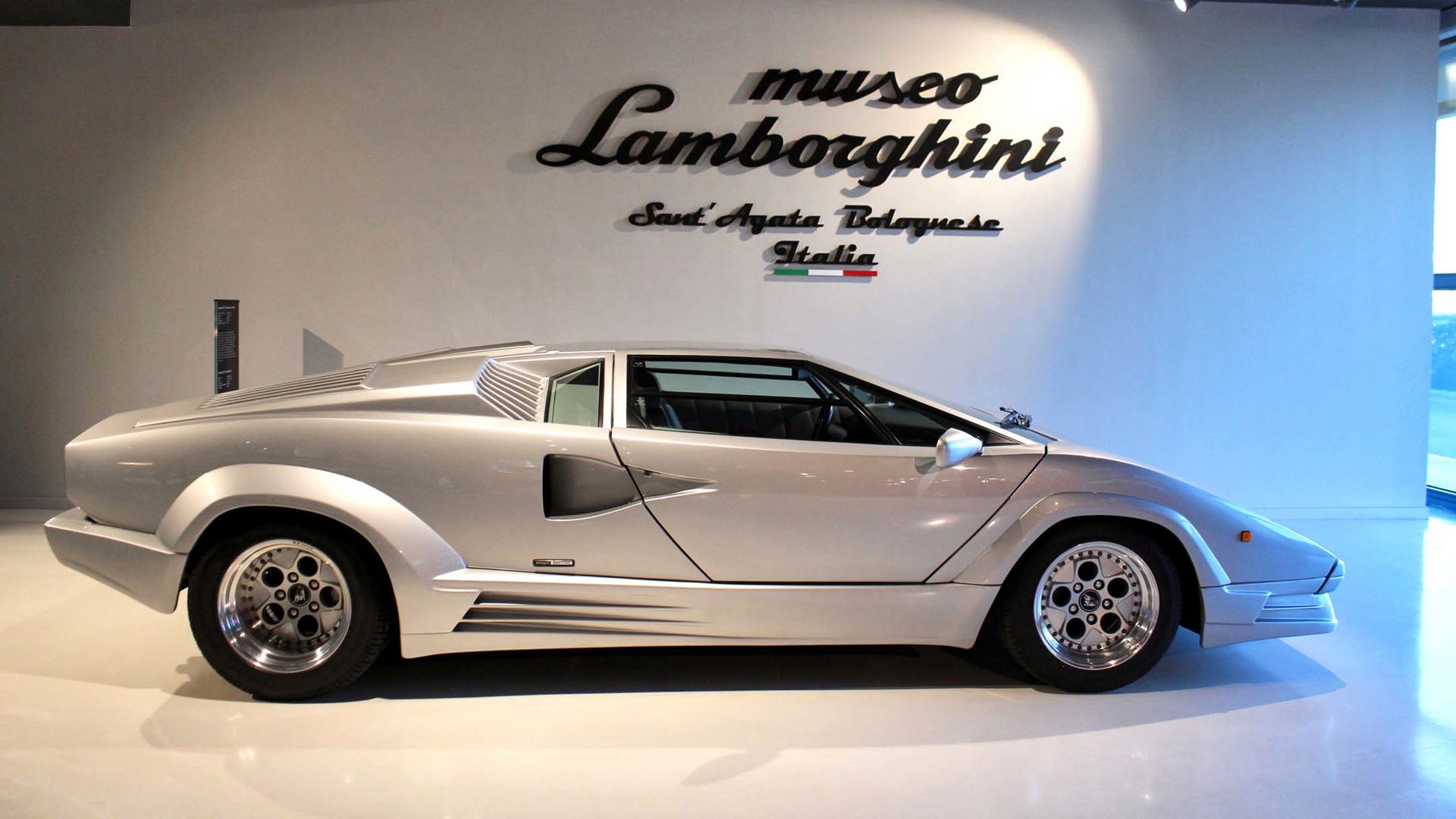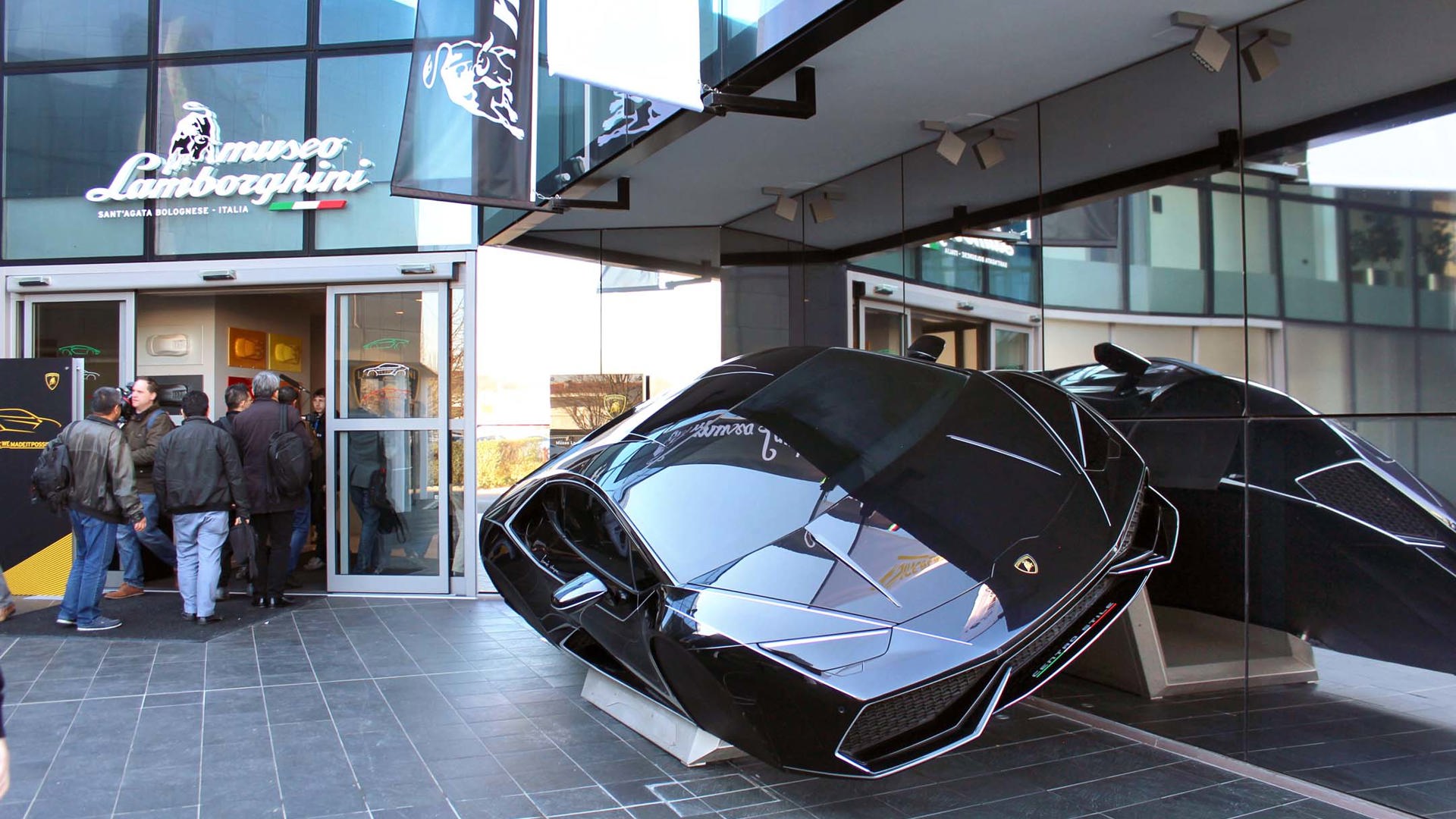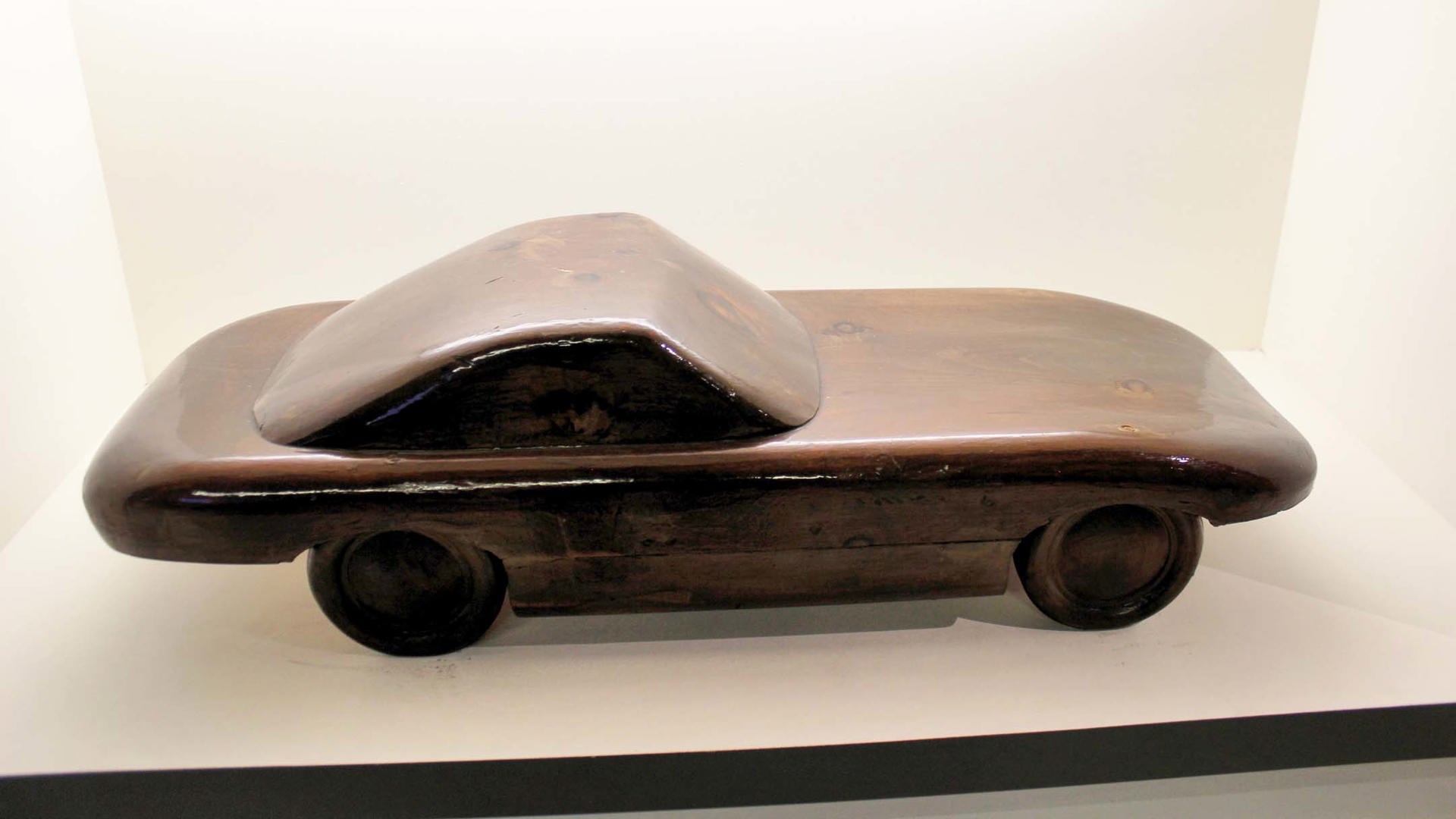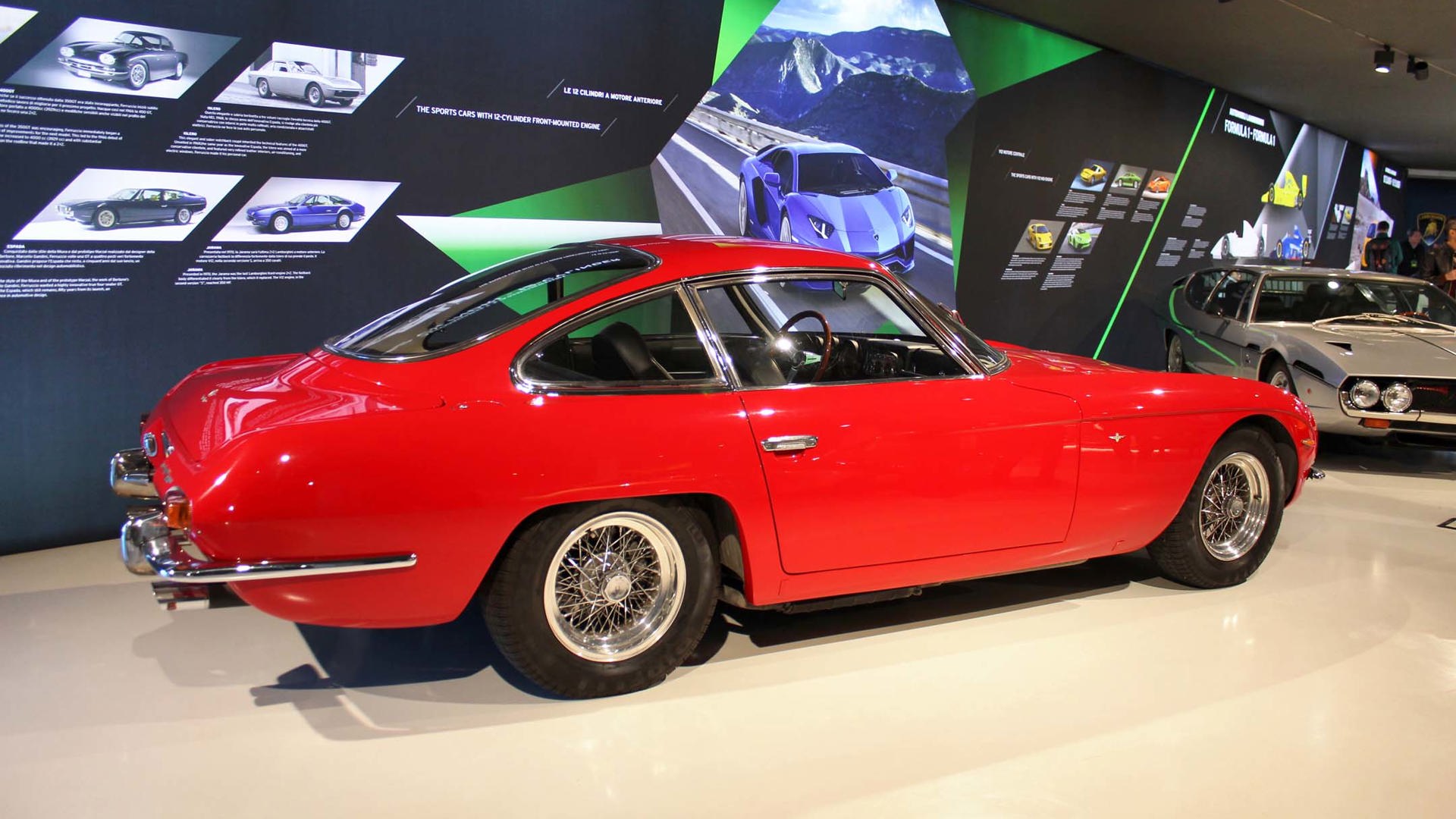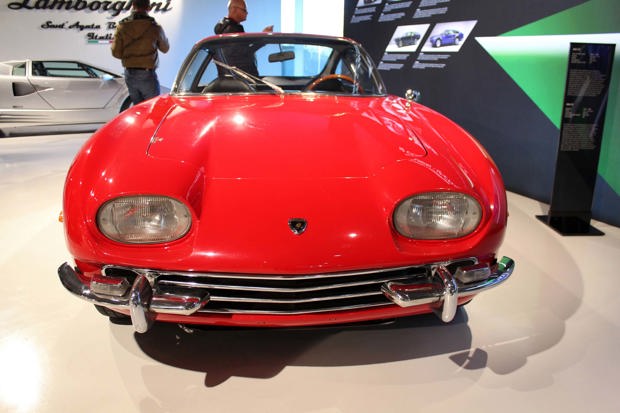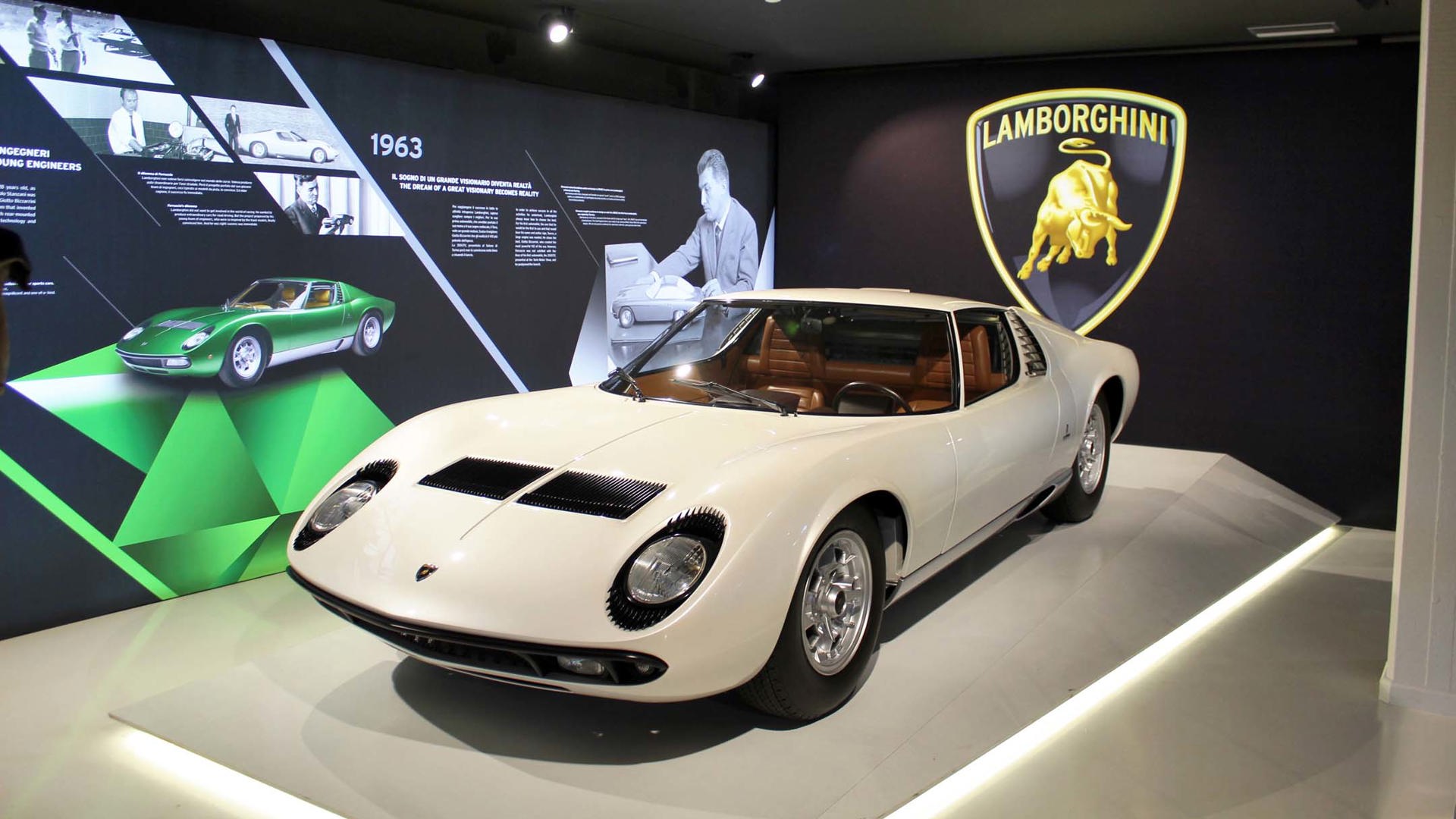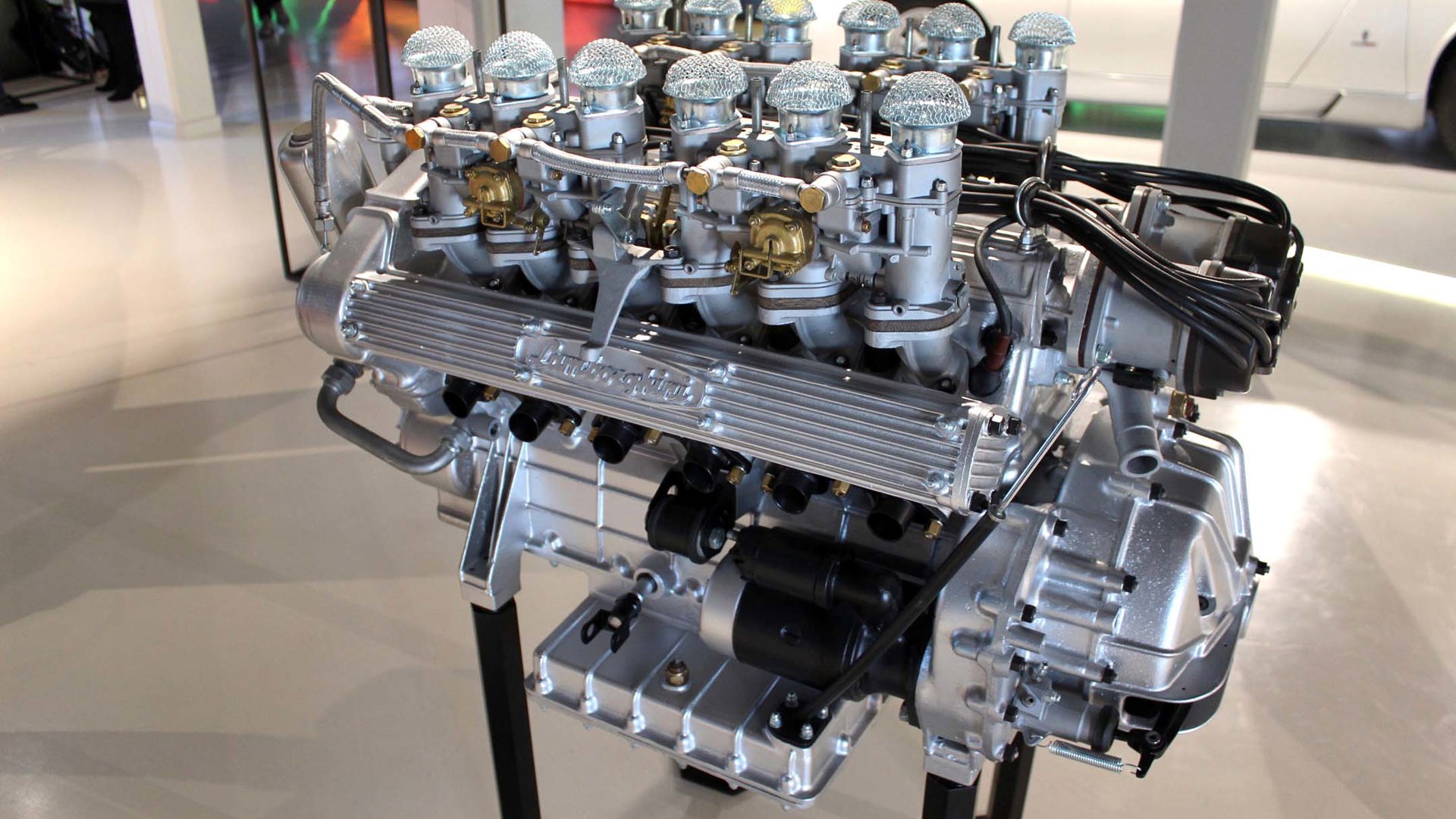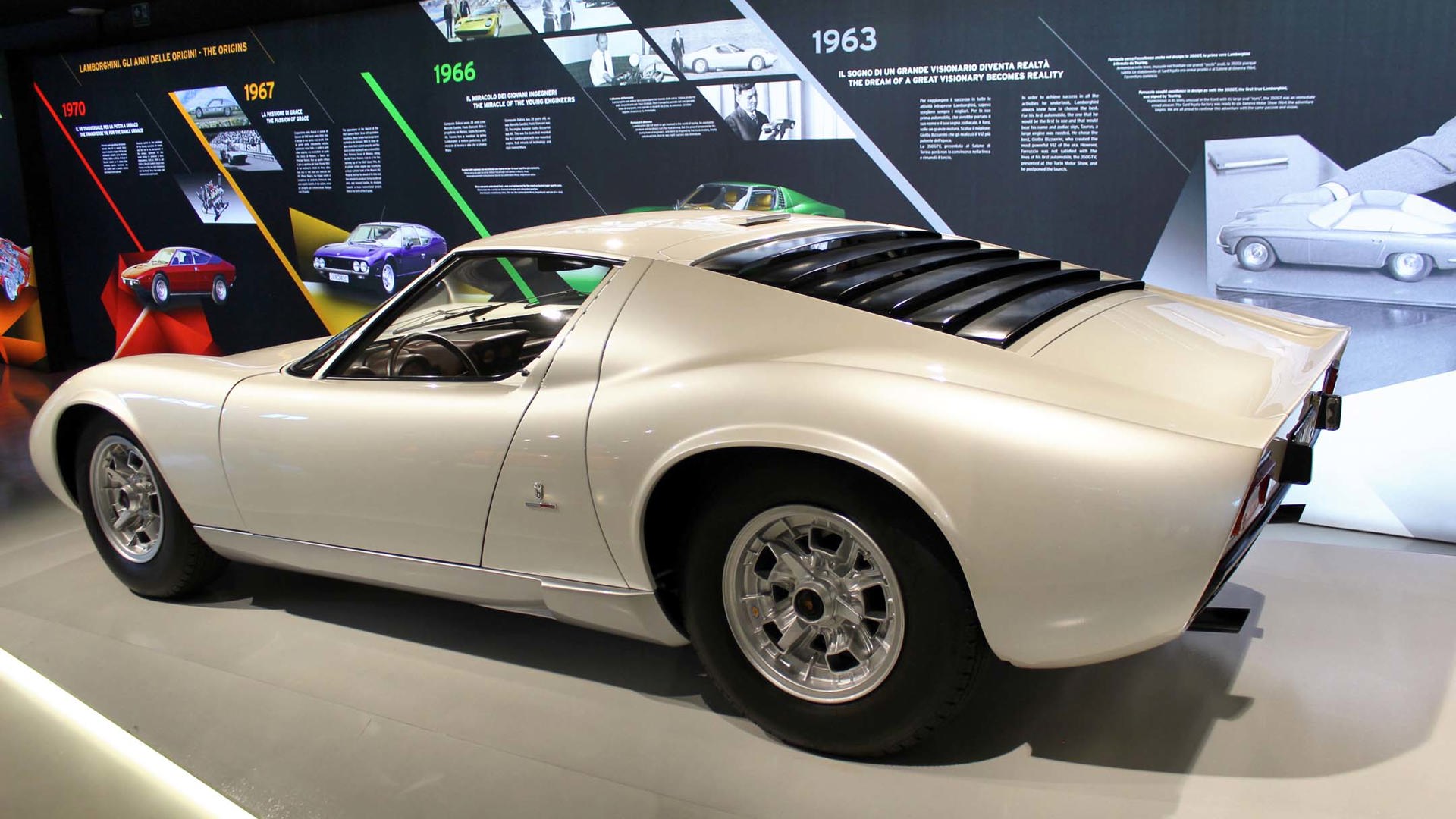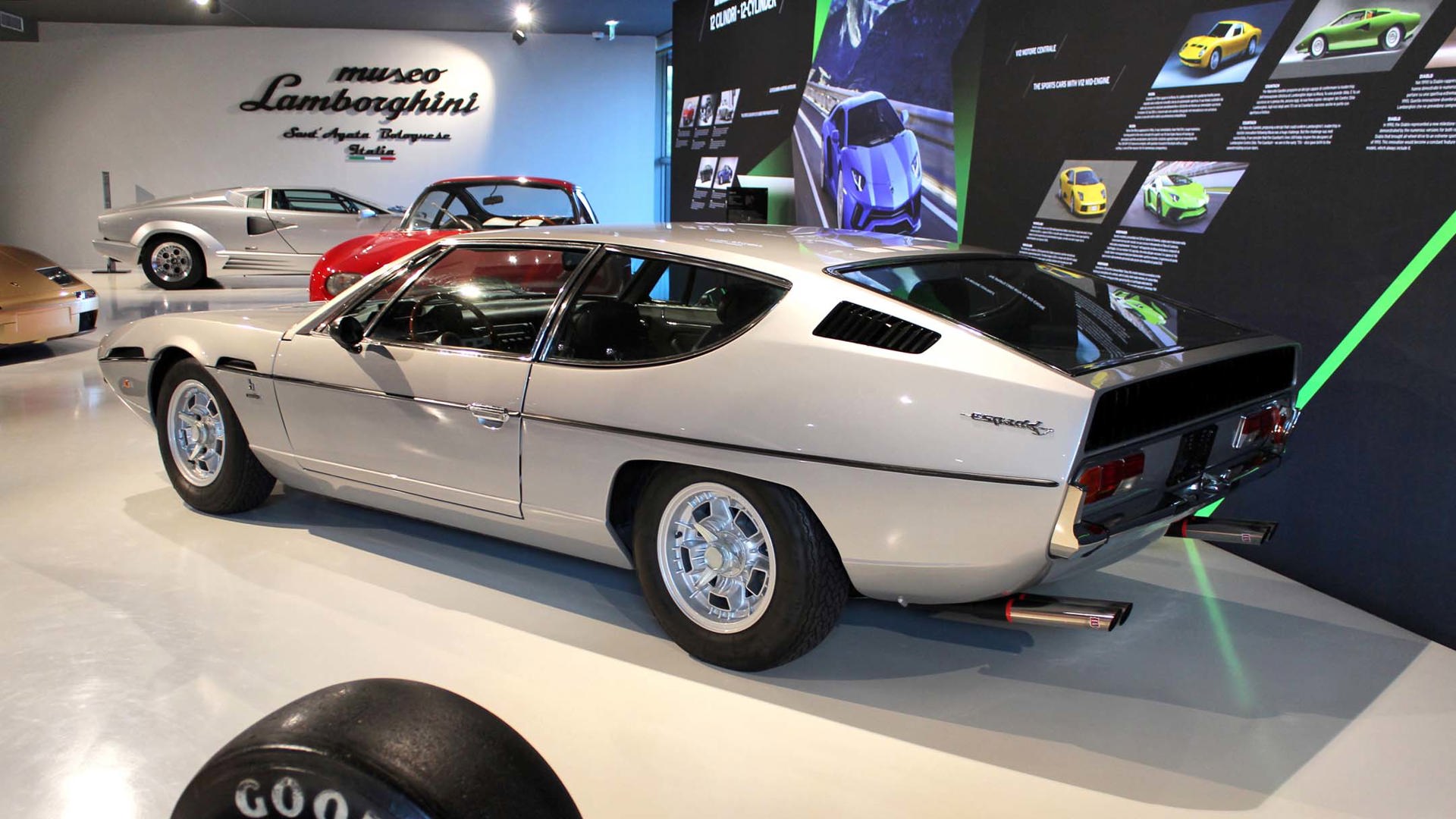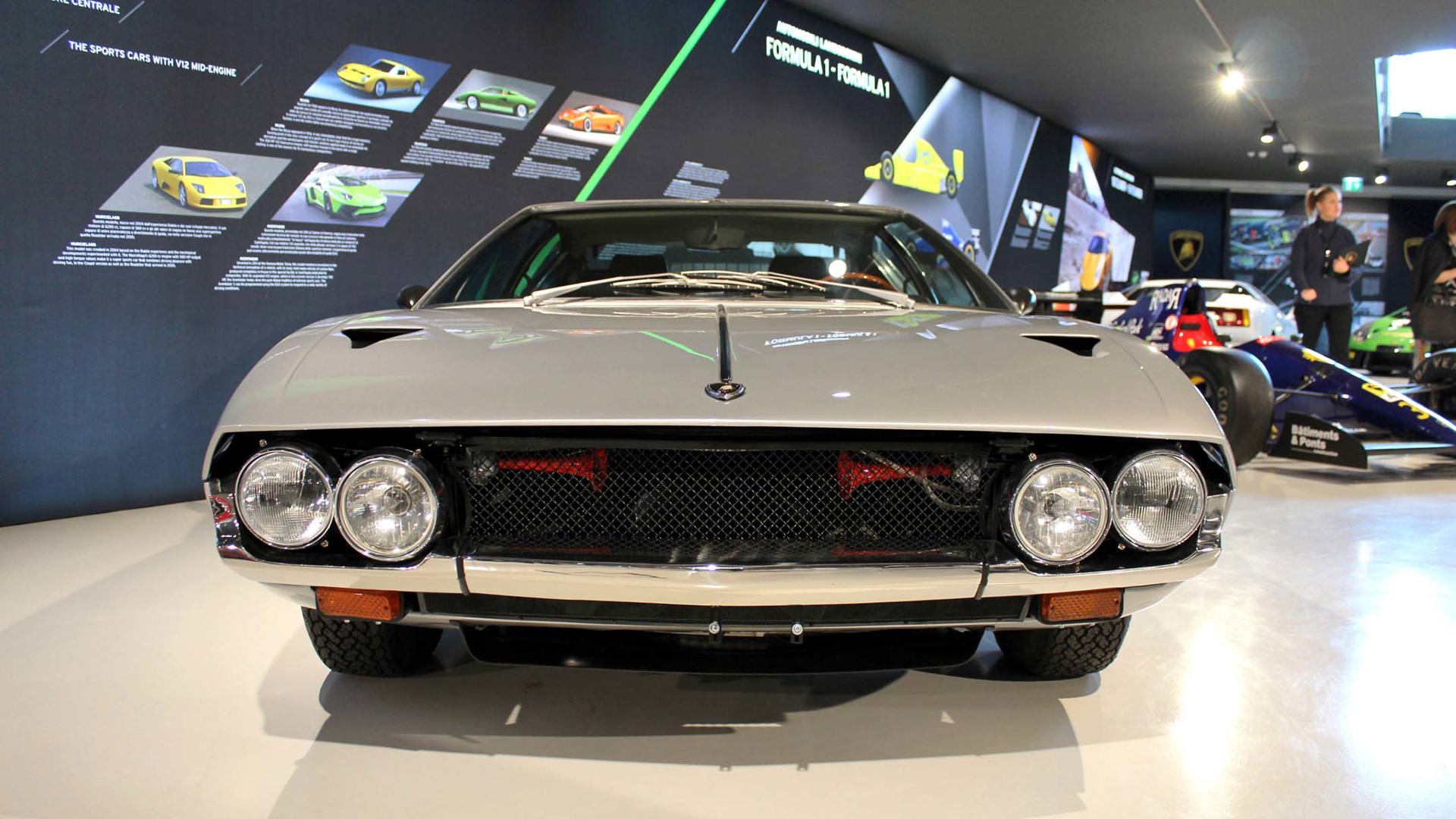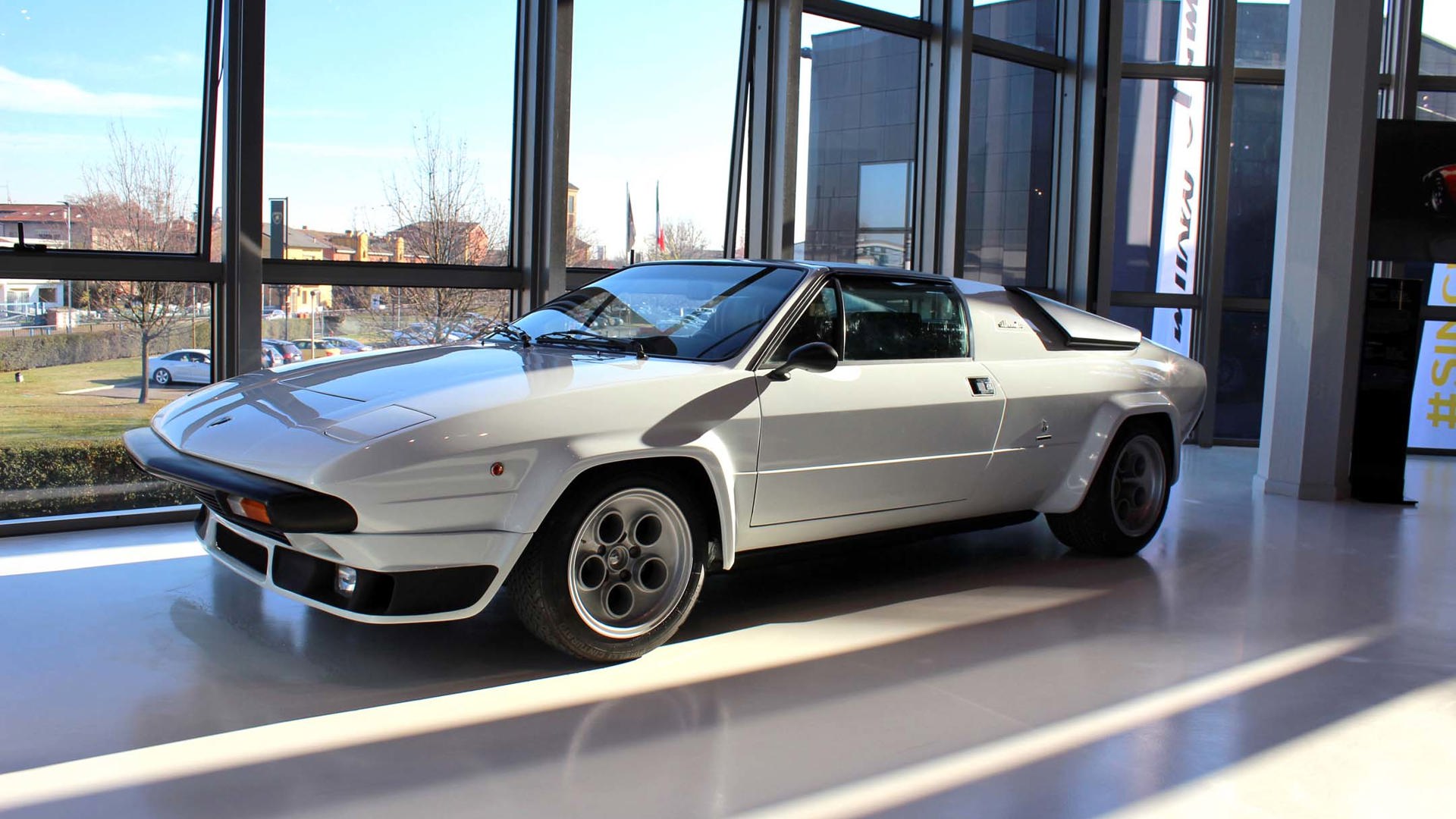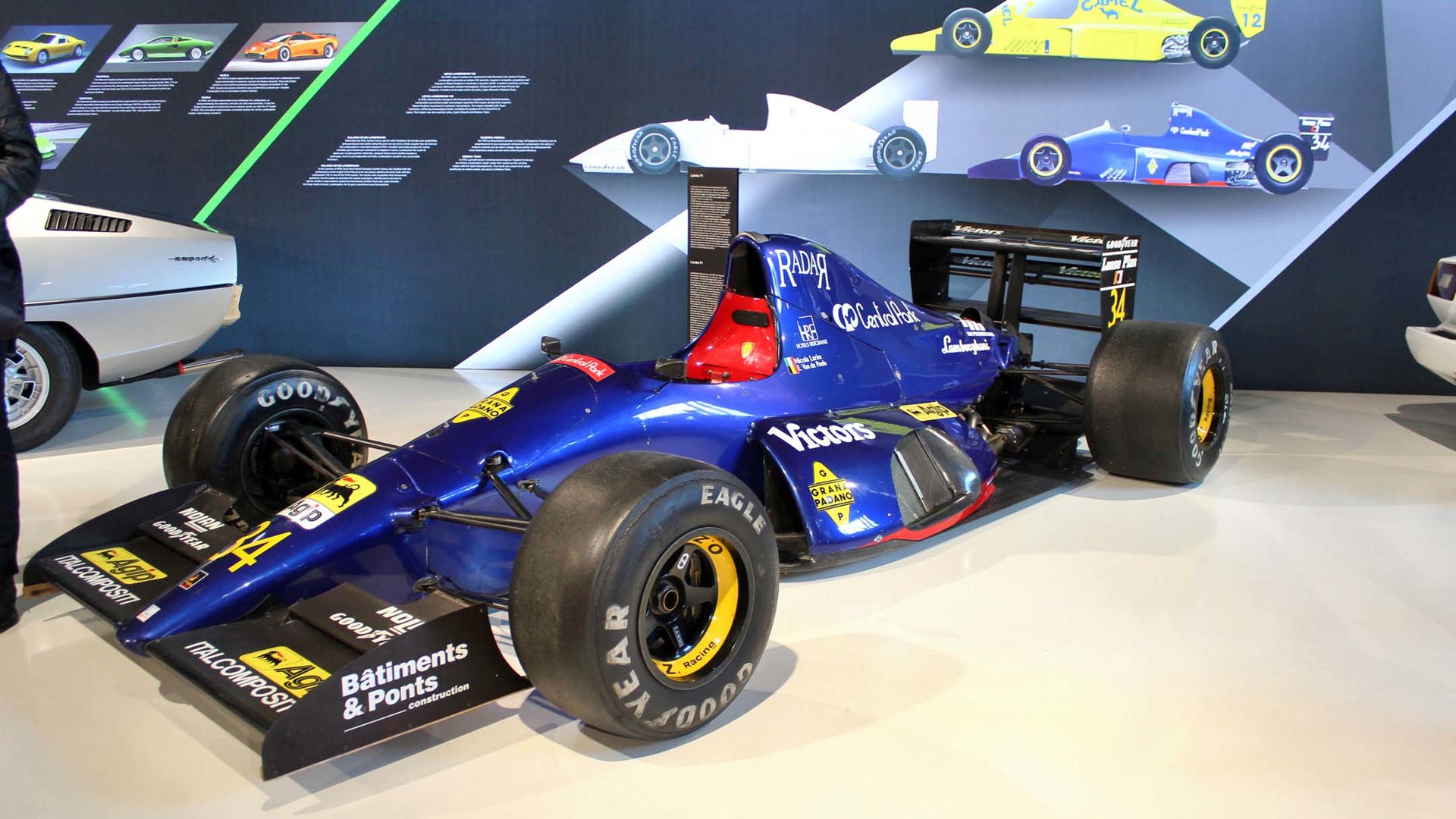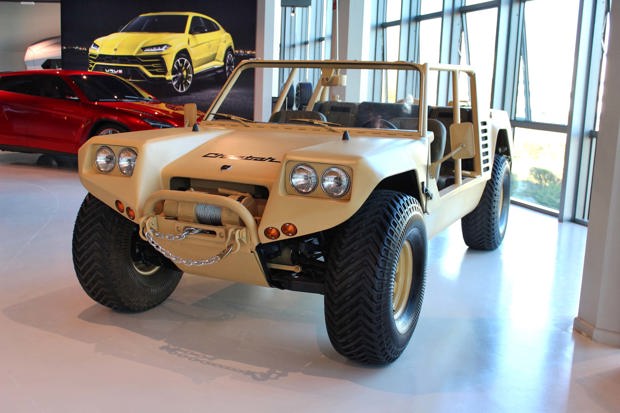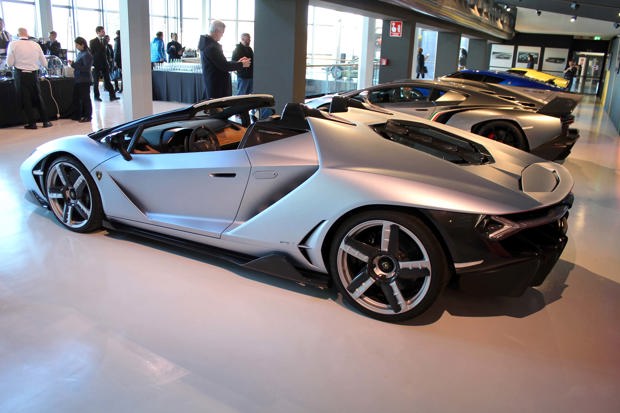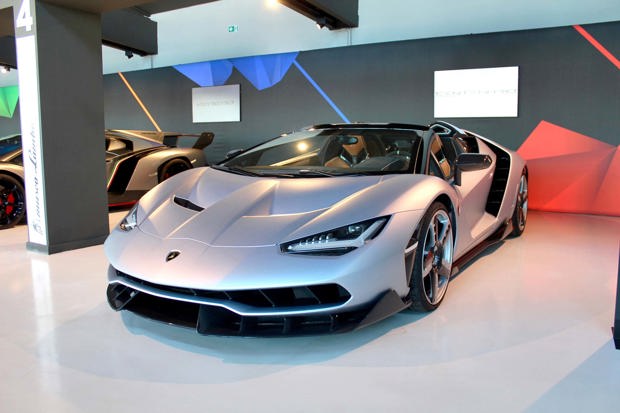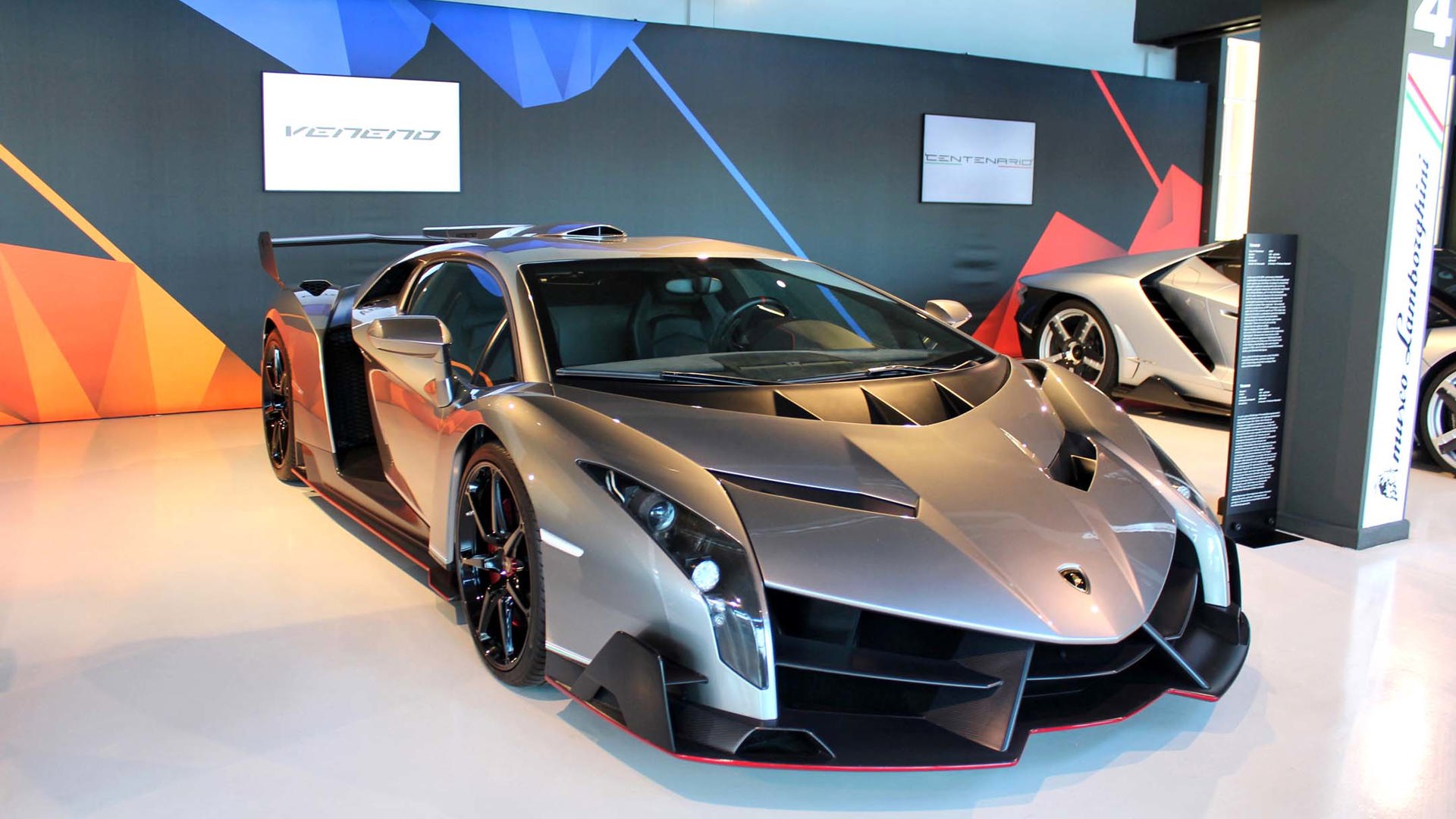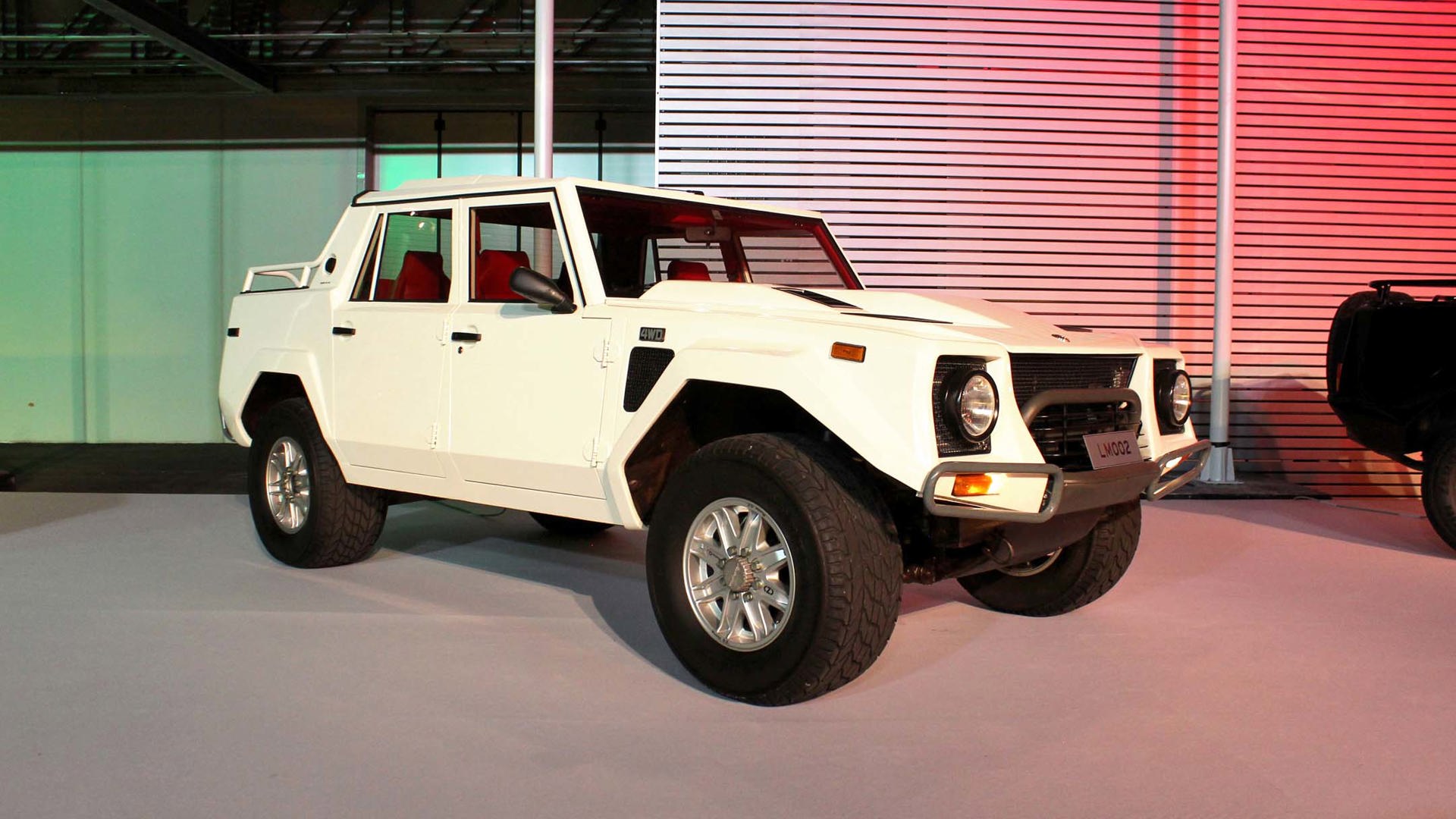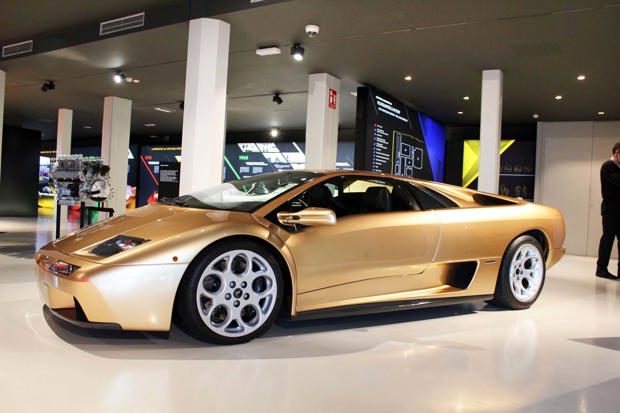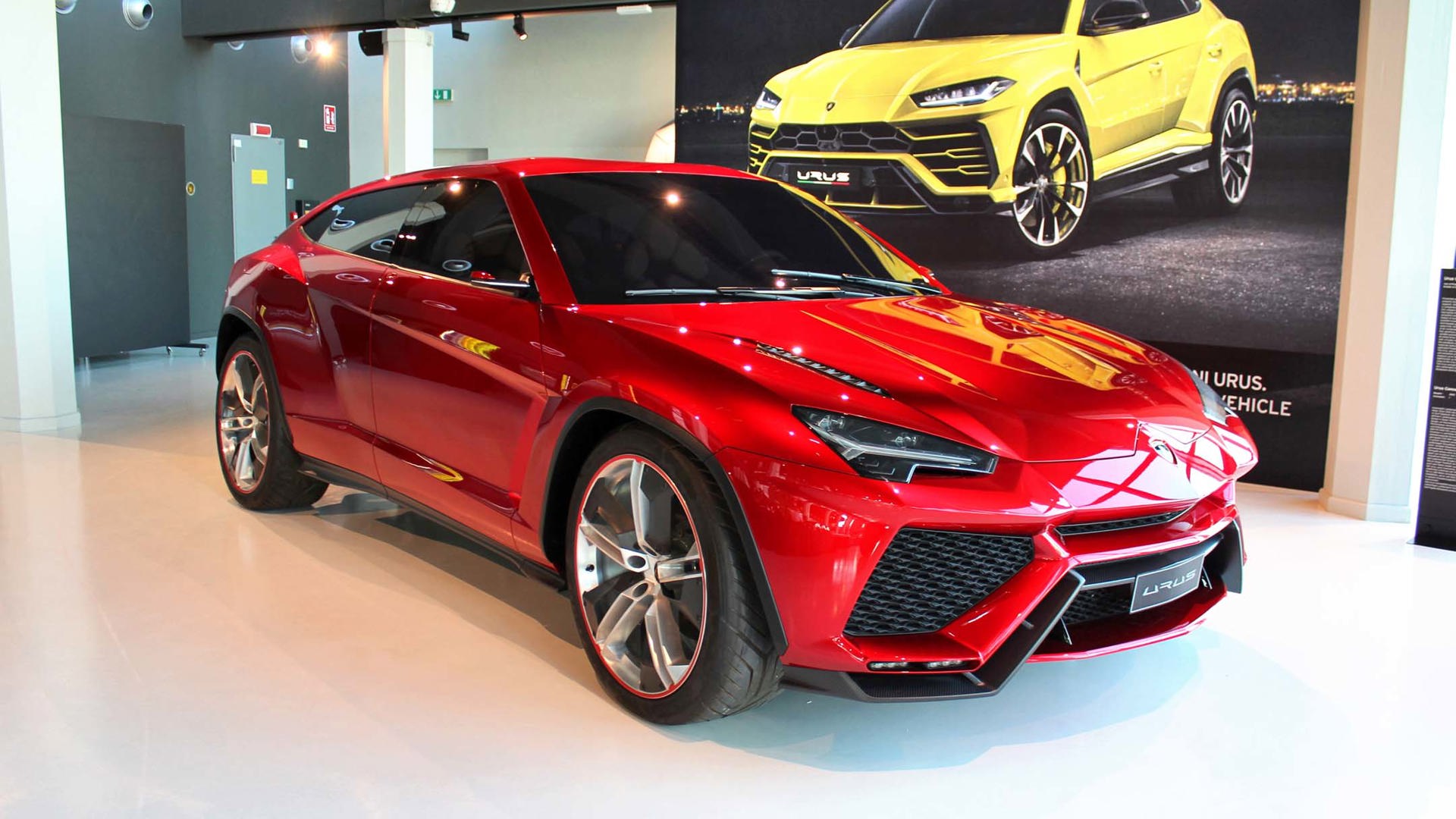Opened in 2001, the Lamborghini Museum hosts a number of historic vehicles and is part of the original factory complex in Sant’Agata that started producing the Lamborghini 350GT in 1964.
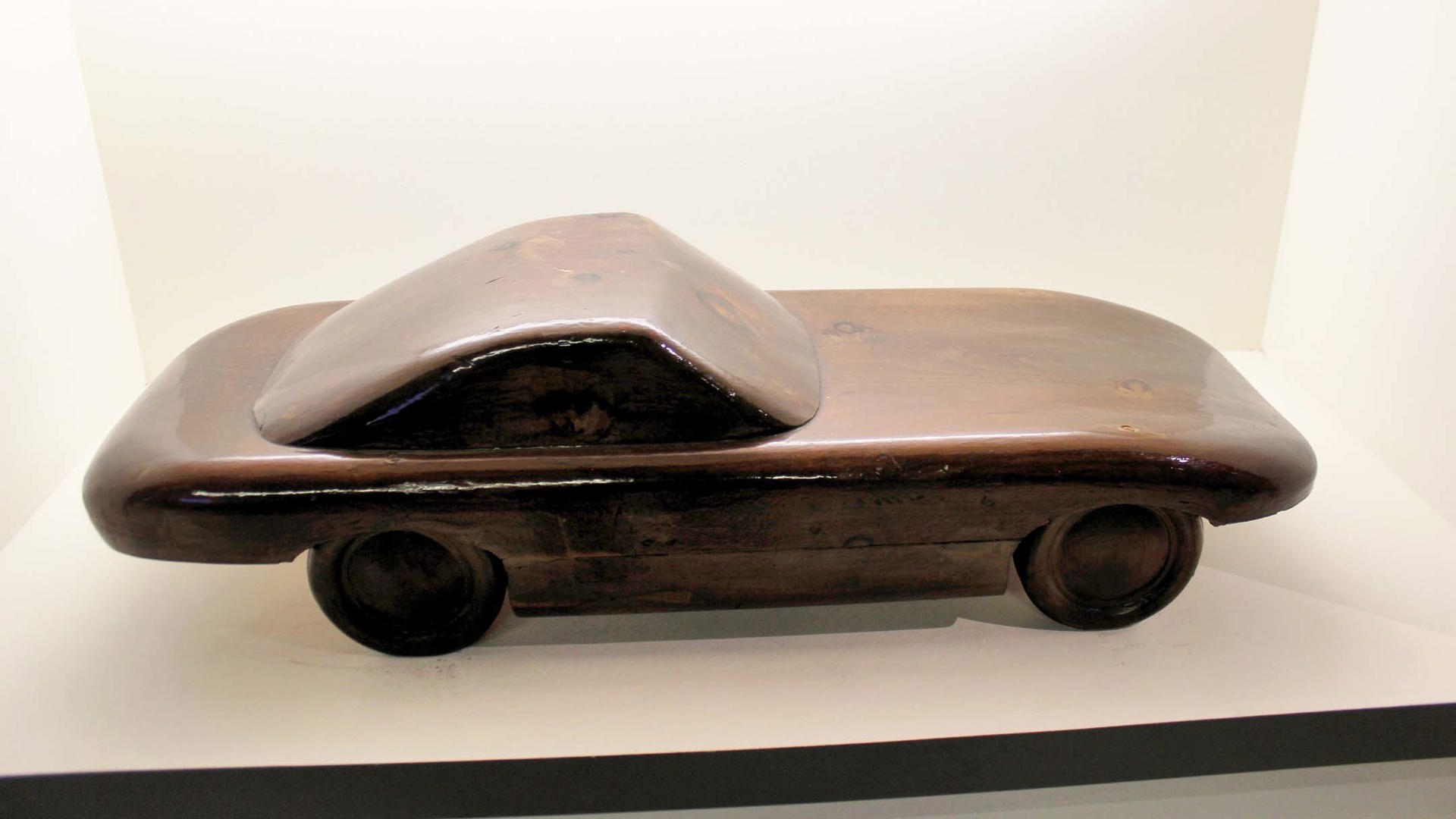
From humble beginnings: This is one of the first models of Lamborghini’s first road car, a project that was inspired by the industrialist’s discontent with his Ferraris, and his ultimate dismissal from Enzo’s office after registering his complaints.
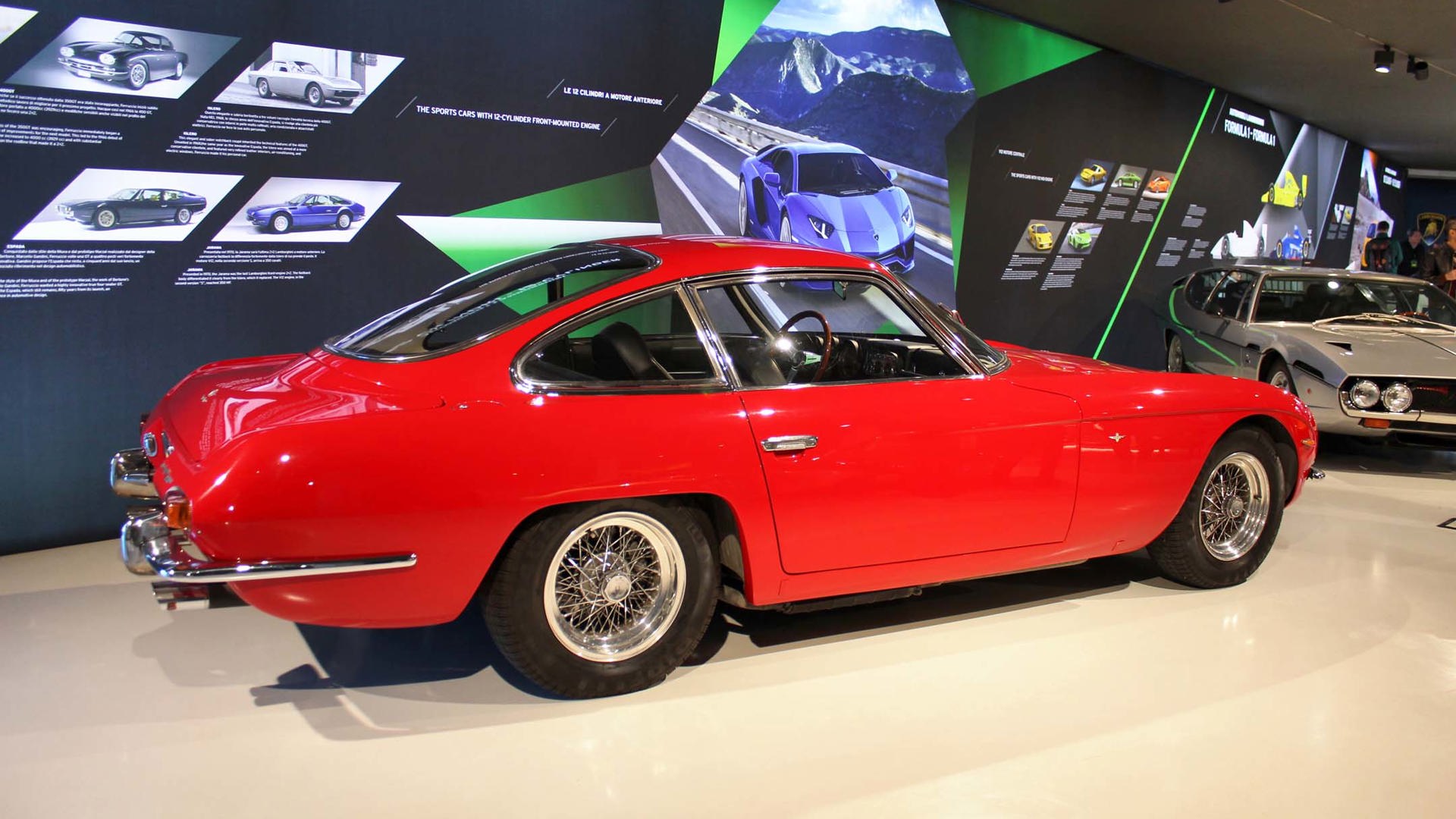
From wood to metal: The 1964 Lamborghini 350GT was designed by Carrozzeria Touring Superleggera and features a 3,500 cc V12 engine designed by engineer Giotto Bizzarrini. It was the most powerful V12 on the market at that time.
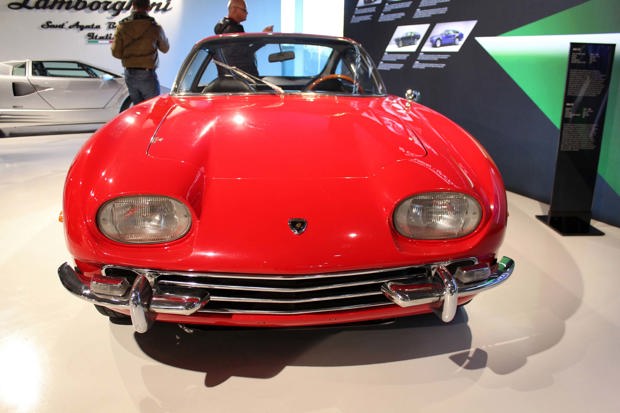
The 350GT had a plush leather interior and drove like a proper grand touring automobile. Unlike Ferraris of the time, as Ferruccio Lamborghini was quick to point out.
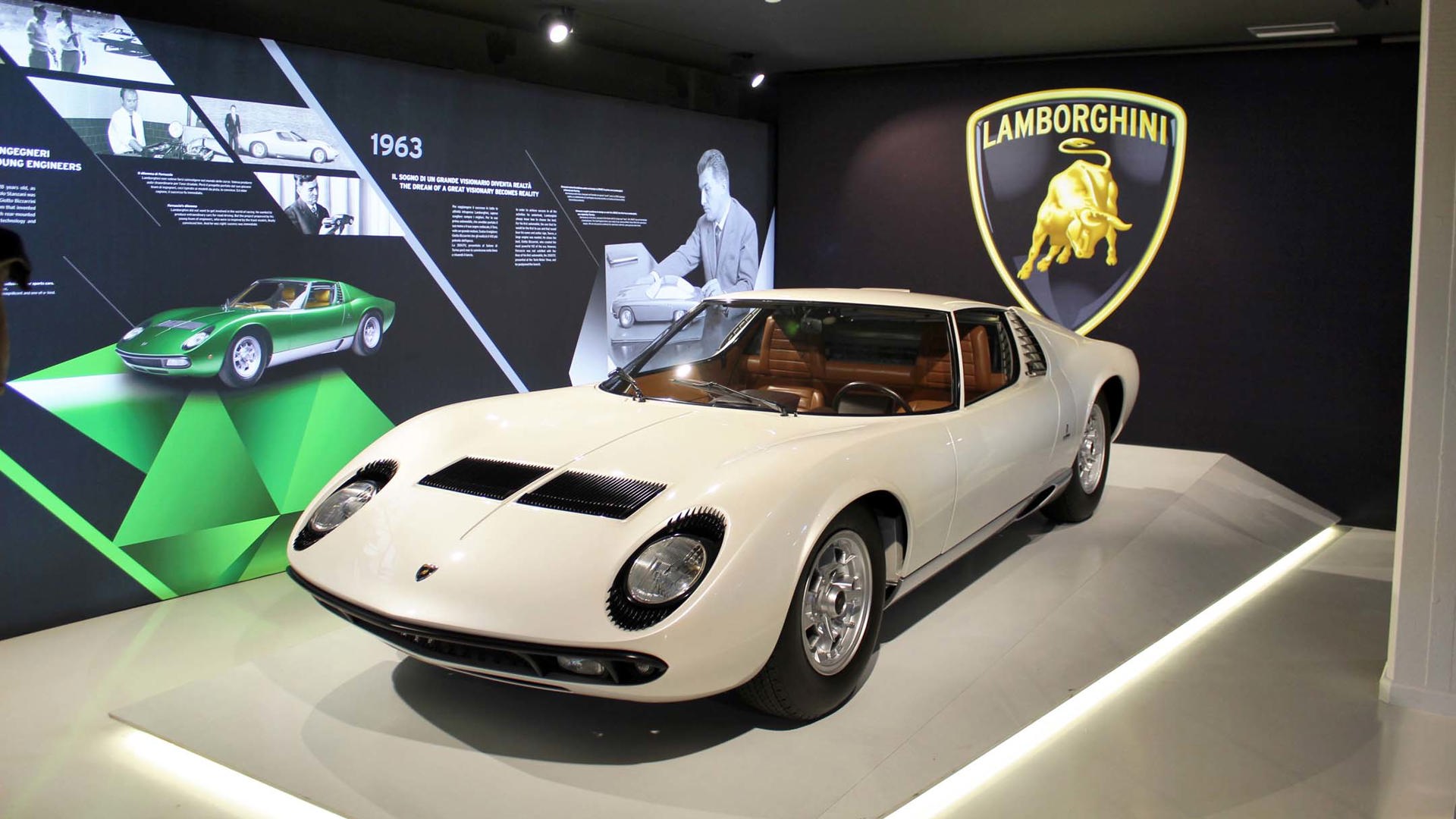
Featuring a mid-mounted transverse V12 engine with integrated gearbox and monocoque construction, the 1966 Miura P400 revolutionized the super sports car genre. Designer Marcello Gandini may have only been 28 at the time, but the beauty of this car still captivates. This is the second prototype built, and since the first was destroyed, it is the oldest Miura extant.
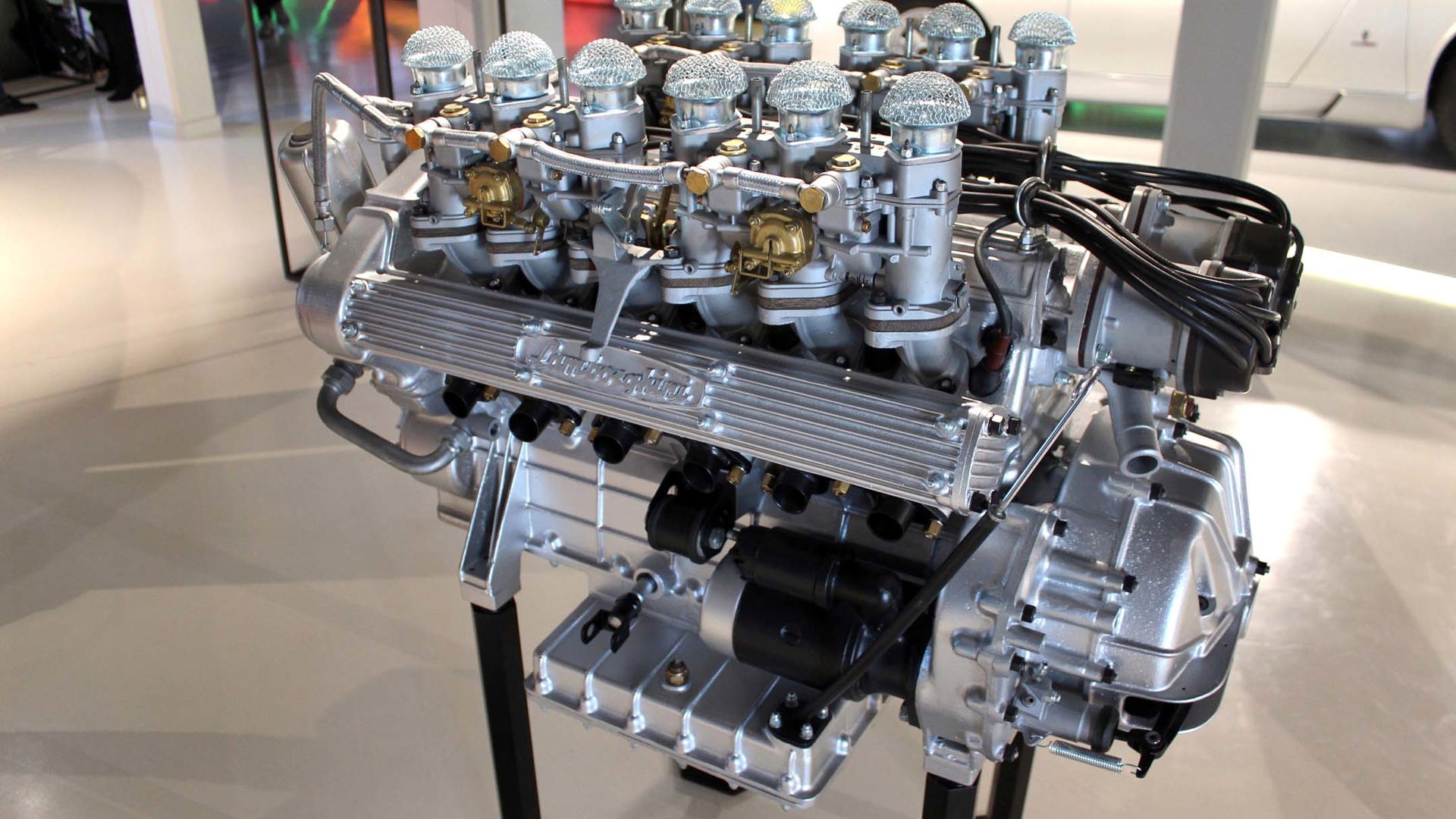
The heart of the Raging Bull. Derived from Bizzarrini’s 3,500 cc compact lightweight V12, displacement was increased to 3,929 cc and the horse count leapt to 350. By the end of the Miura’s run, this engine was making 385 horsepower.
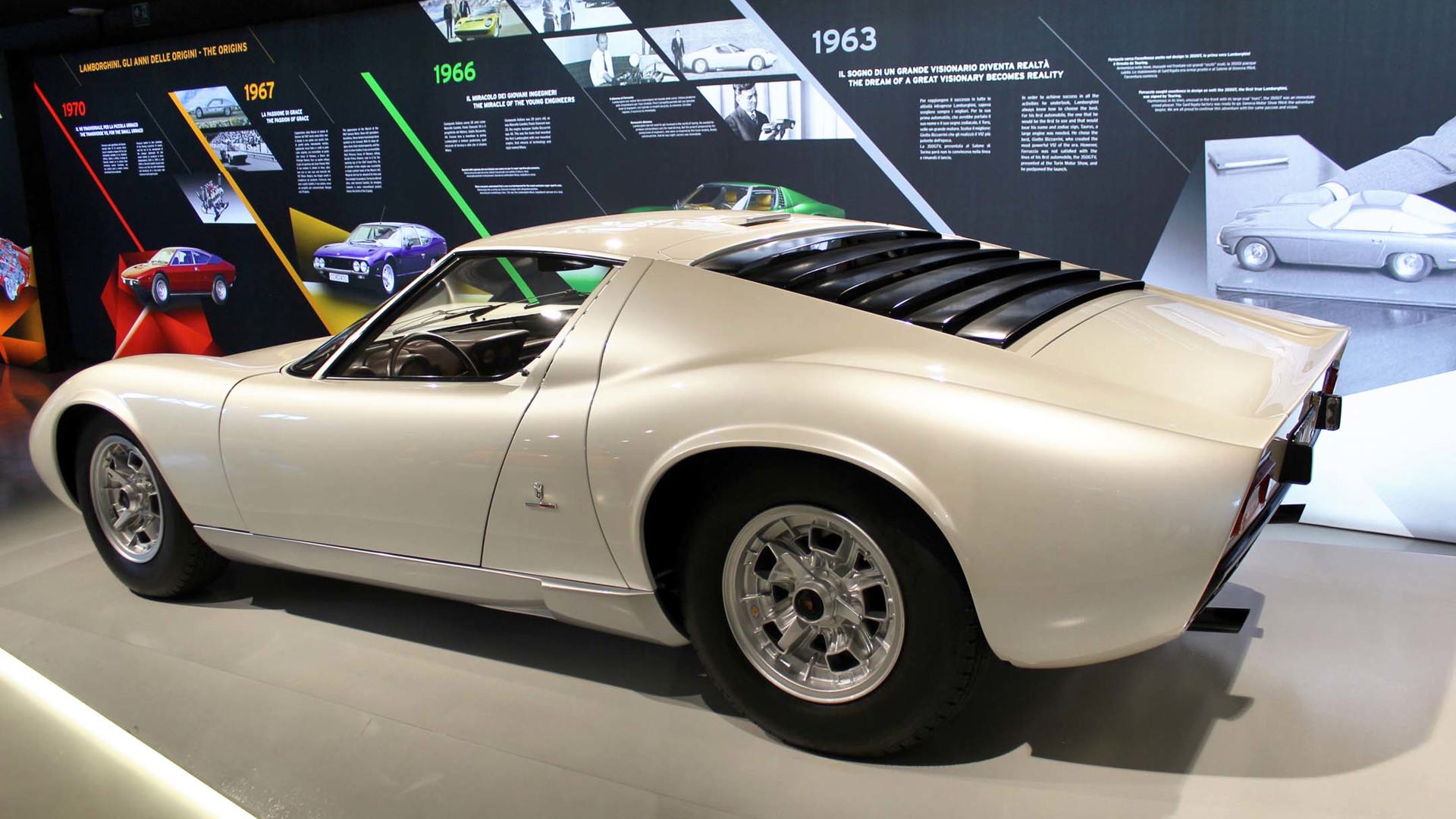
The Miura has no bad angles. This car was first shown at the 1966 Geneva motor show.
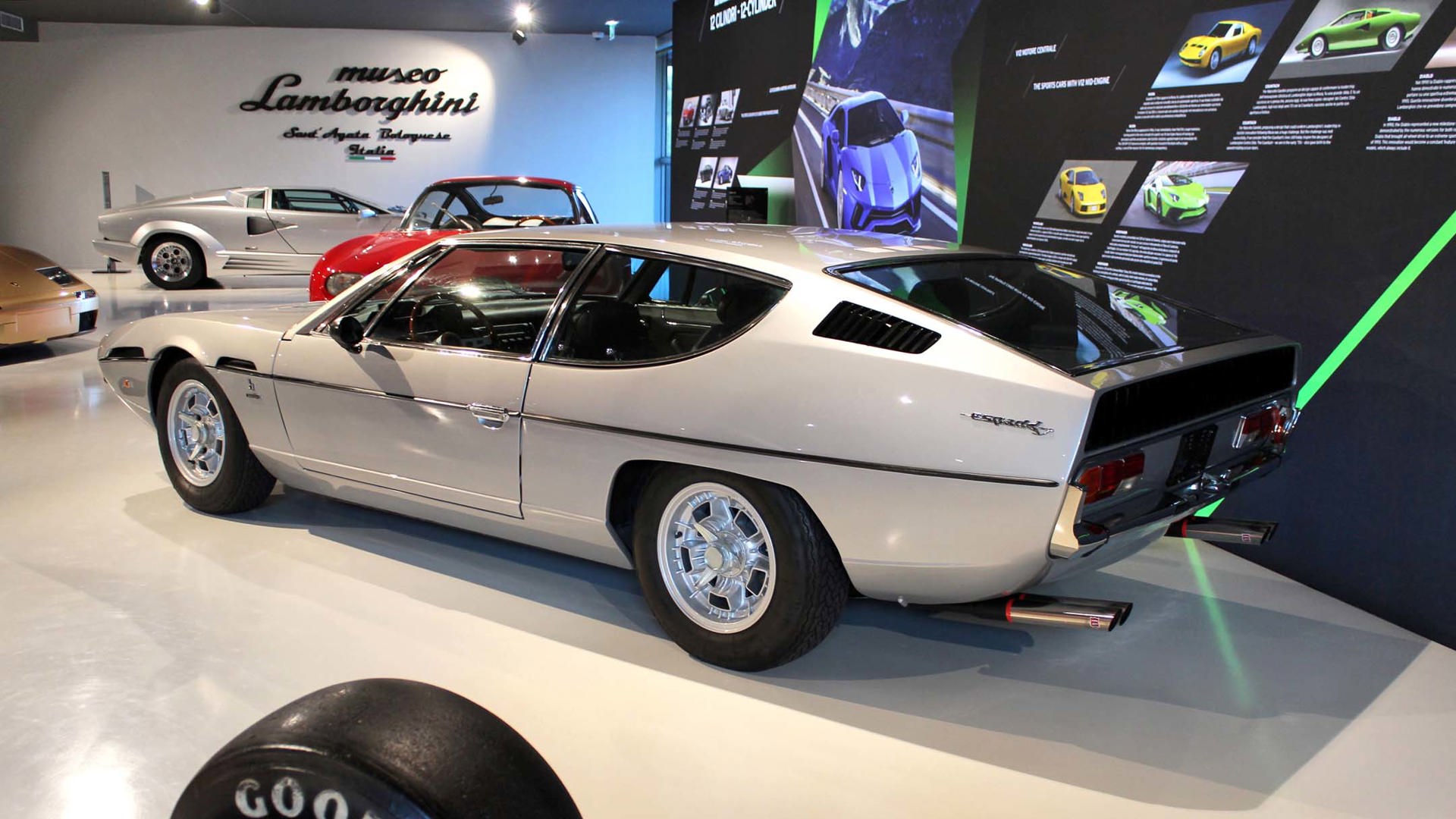
Following the success of the Miura, Lamborghini wanted to build a highly innovative true four-seater. Again, the young Bertone designer Marcello Gandini answered the call with this stunning Espada.
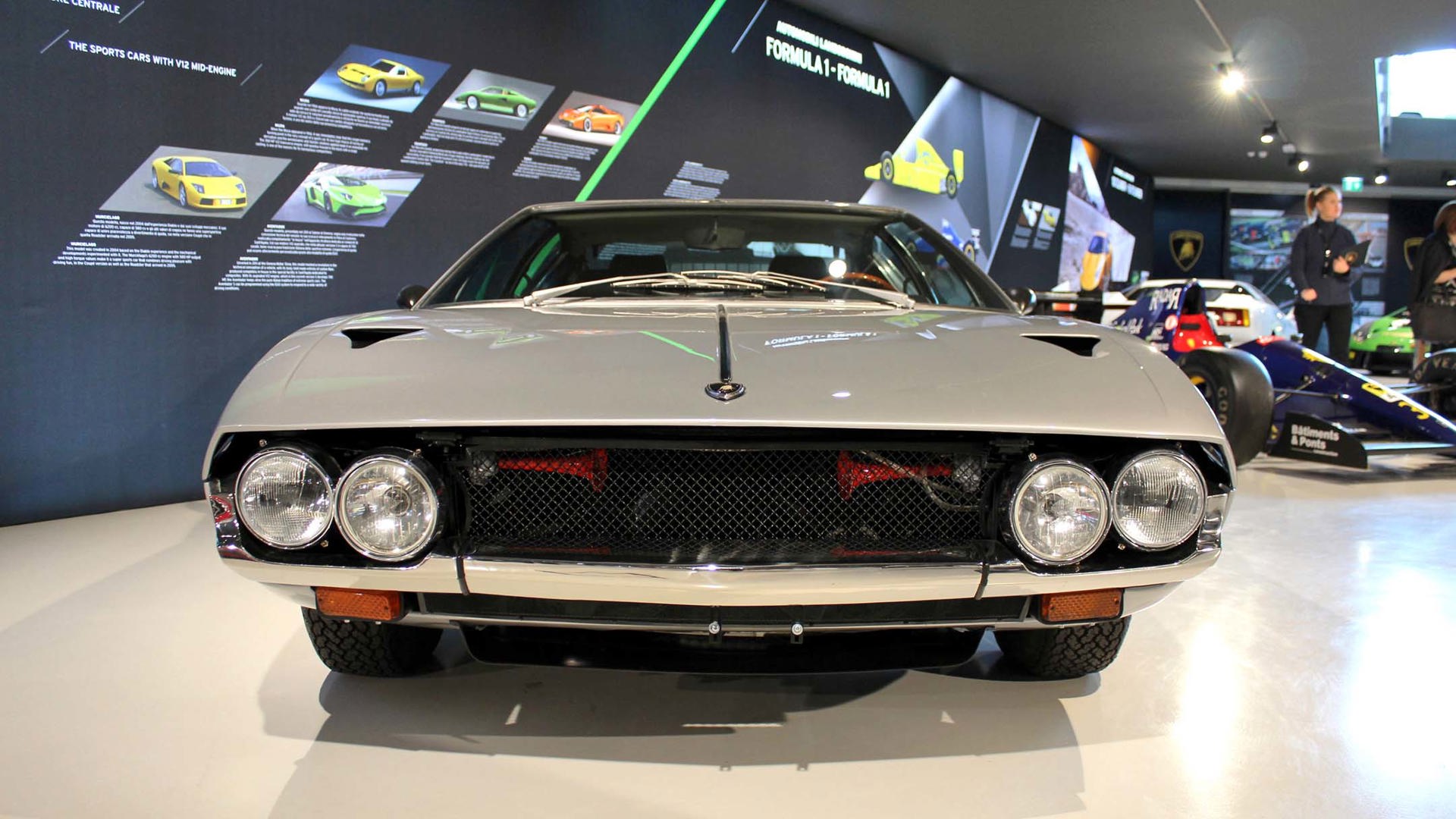
The Lamborghini Espada was built from 1968 to 1978, with 1,217 produced.
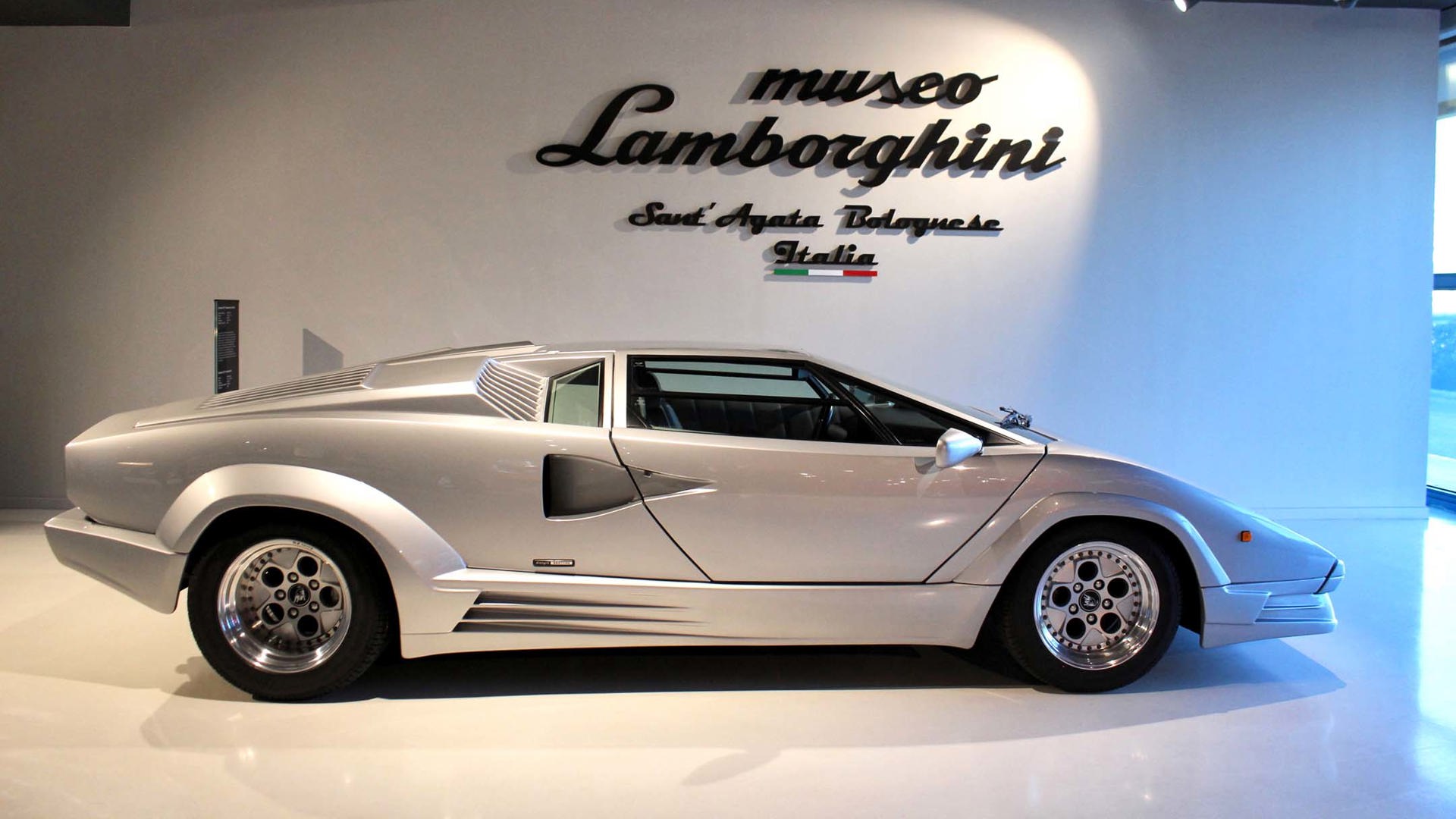
How do you follow the Miura? It is said the name Countach came from the exclamation of coachbuilder Nuccio Bertone when he saw his chief designer Marcello Gandini’s model of the Miura replacement in 1973. Ferruccio Lamborghini also liked this cryptic name, so it stuck.
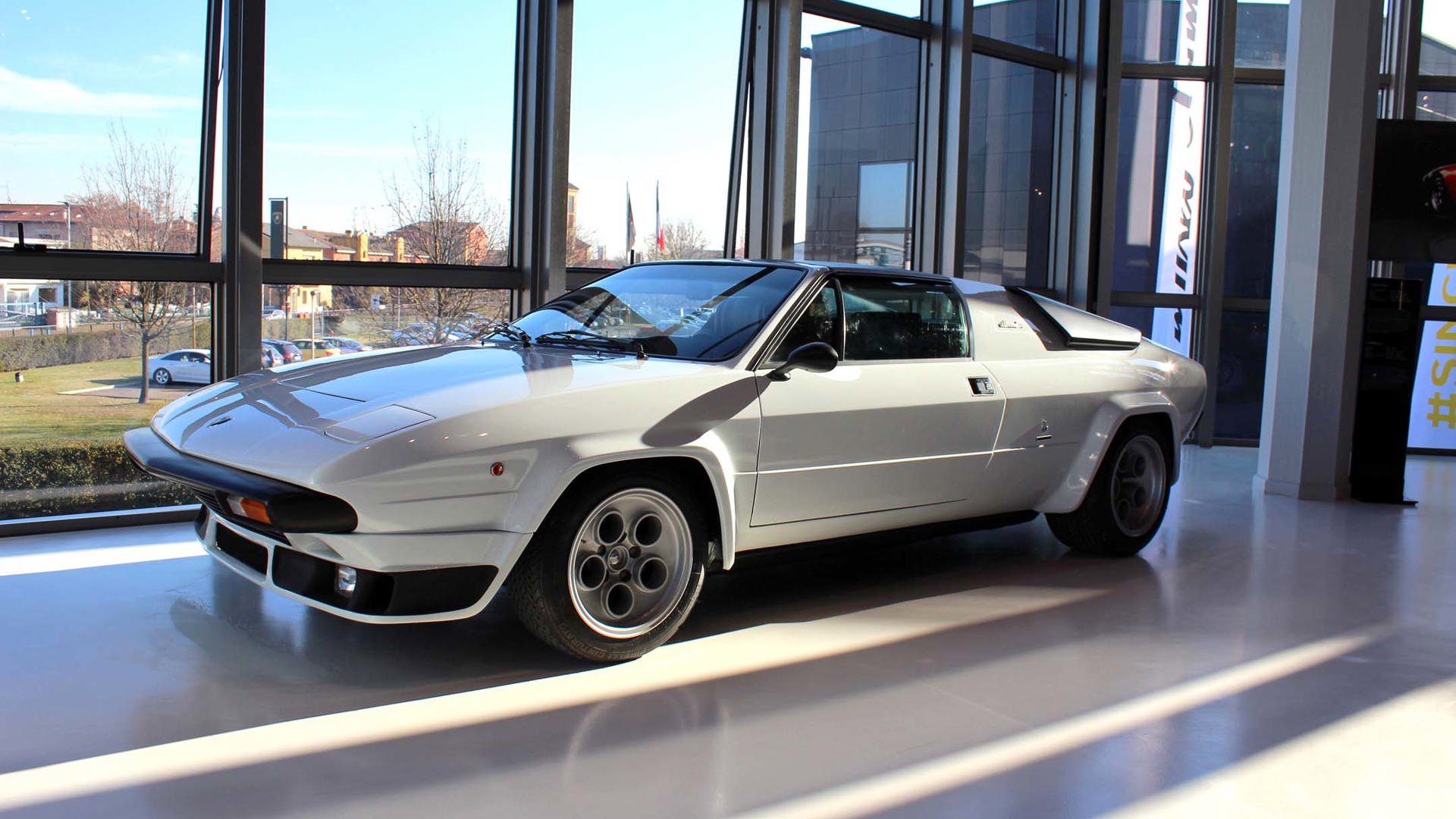
This is a rare bird. Designed for the American open-top market, only 54 Silhouettes were built from 1976 to 1979. Power came from a 250 hp 3.0L V8.
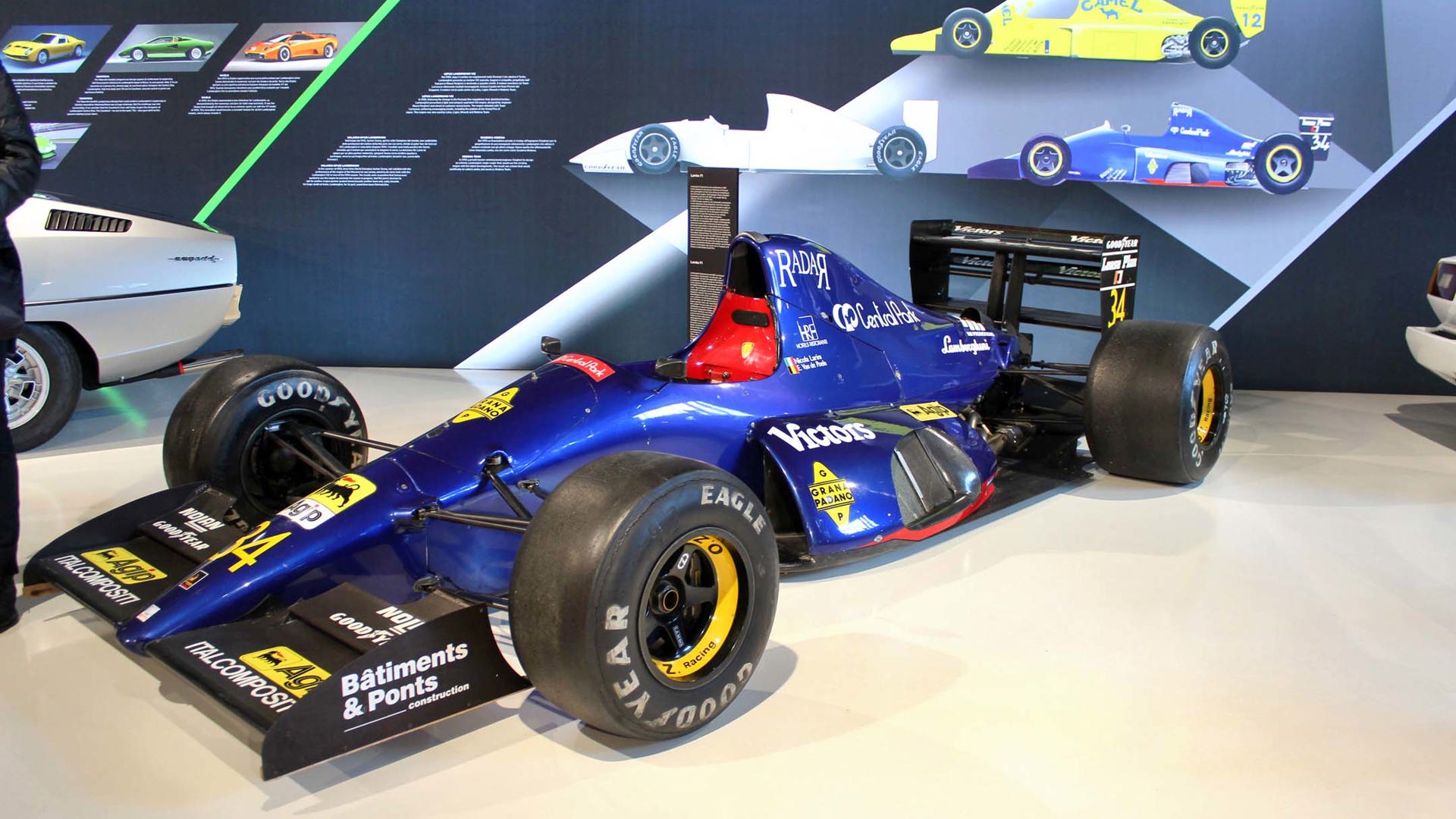
This completely in-house Lamborghini F1 designed by Mauro Forghieri entered the 1991 season under the name Modena Team. It featured a 3.5L 80-degree V12 that made 710 horsepower and spun to 13,600 rpm. The Lambo F1’s best finish was seventh in its first race at the US Grand Prix. Beyond that, it was mostly uncompetitive.
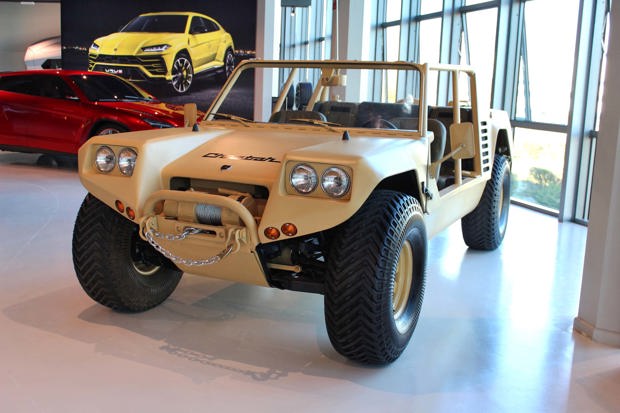
With the American military in mind, Lamborghini created the Cheetah in 1977, a rear-engined 4x4 running with an American V8. It proved underpowered (180 hp) and unsuitable. Only two were built, and this specimen in the museum is the only Cheetah extant.
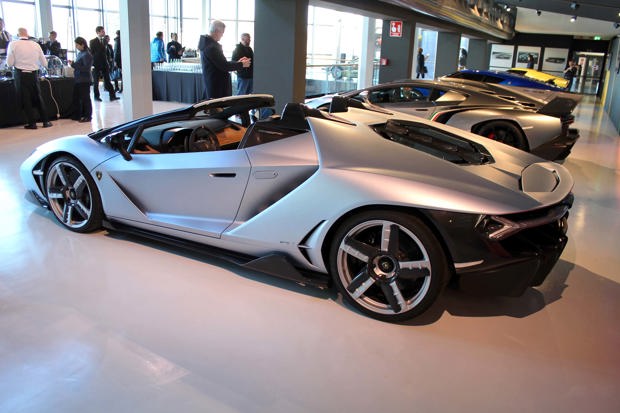
Based on the Aventador supercar, the Centenario squeezed 770 horsepower from its 6.5L V12 and had a top speed of 350 km/h, all the while wearing a bespoke carbon-fibre body. It was in celebration of Ferruccio Lamborghini’s 100th birthday. With all-wheel drive (and rear-wheel steering) it launched to 100 km/h in 2.8 seconds. Twenty Coupes were built in 2016, and twenty Roadsters in 2017. Price was 2,200,000 euros.
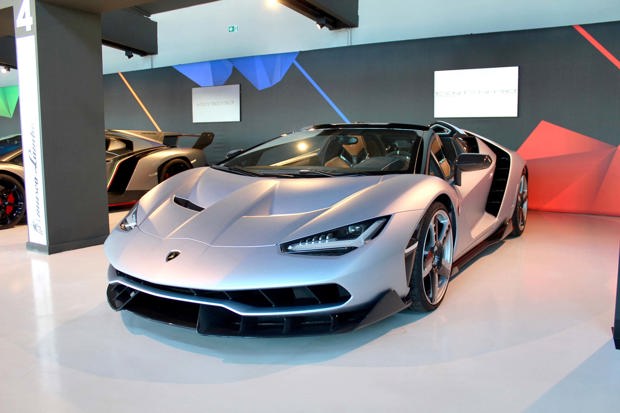
And from the front....
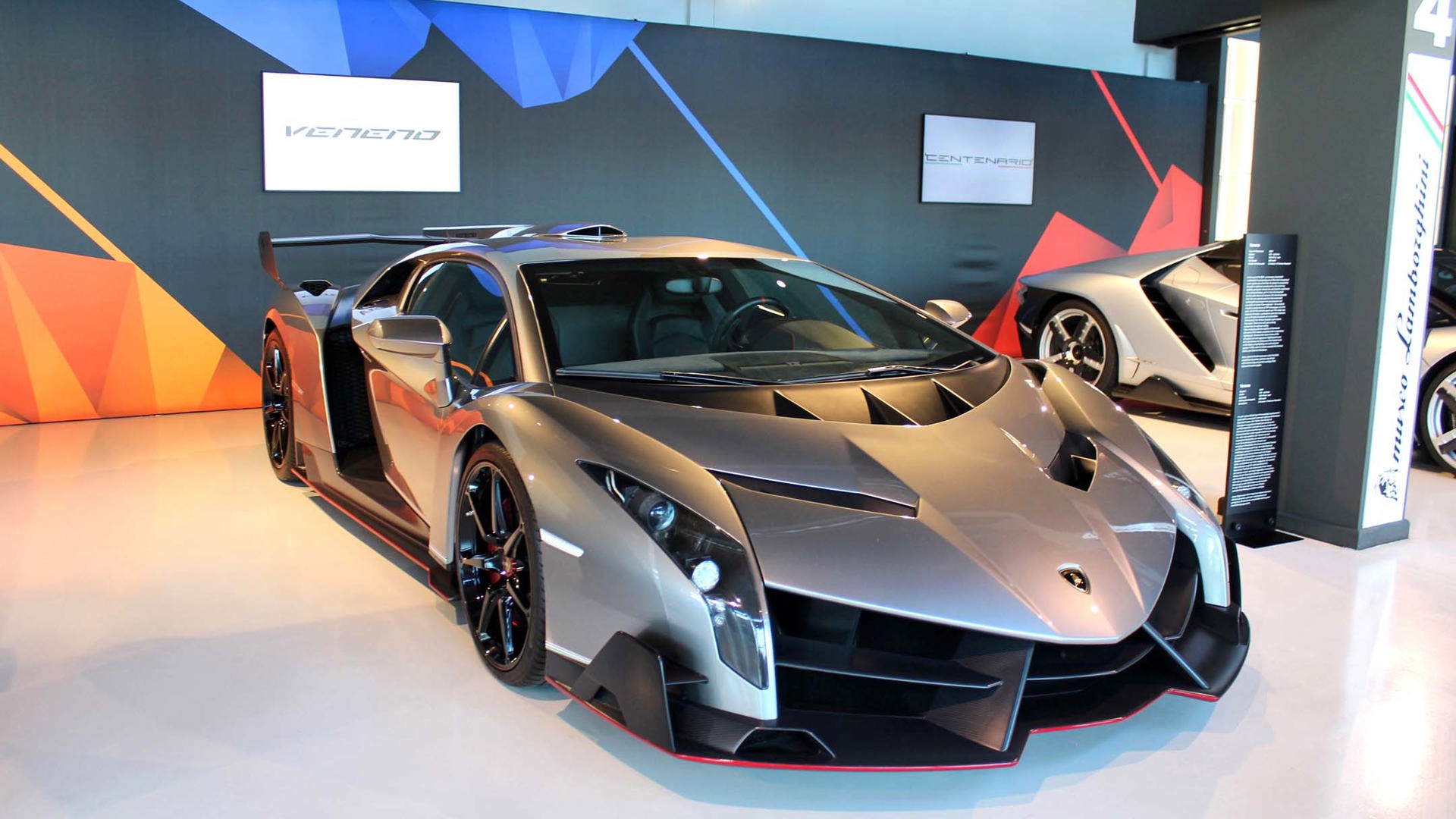
The 2014 Veneno was created to celebrate Automobili Lamborghini’s 50th anniversary. Again, based on the Aventador, its design focussed on aerodynamics and cornering stability, giving it the real dynamic experience of a racing prototype. In keeping with Lambo tradition, the name Veneno comes from a legendary fighting bull that gained fame in 1914 when he fatally gored the famous torero Jose Sanchez Rodriguez. Only 12 cars were built – three hardtops and nine roadsters. Starting price 3.3 million euros.
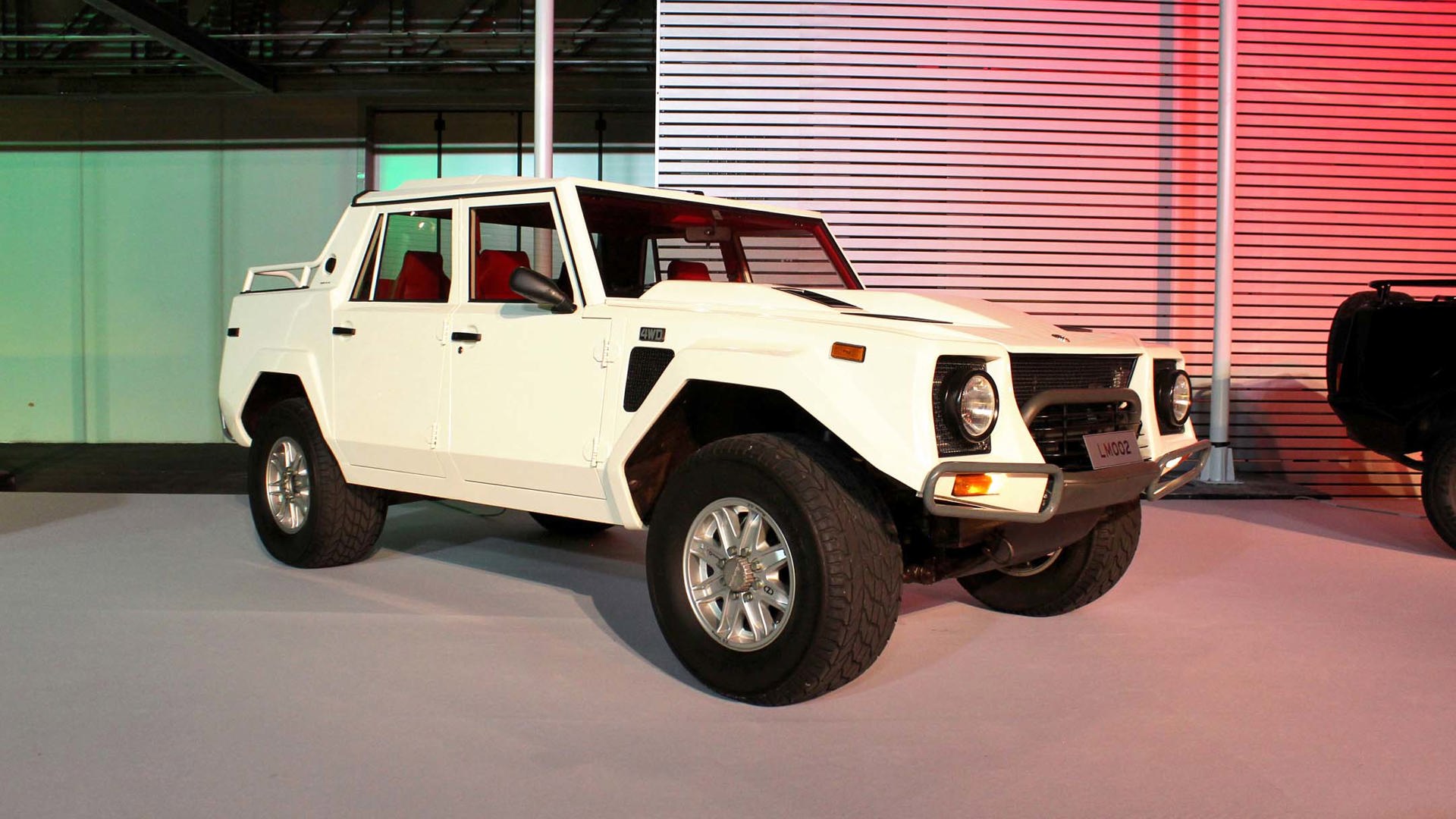
The LM002, or Rambo-Lambo as it was affectionately called, carried the Countach’s 5,167 cc V12 up front and a 290-litre fuel tank in the back. For those wanting more power, a 7.2L marine V12 was on offer. Lamborghini produced 328 LM002s from 1986 to 1993.
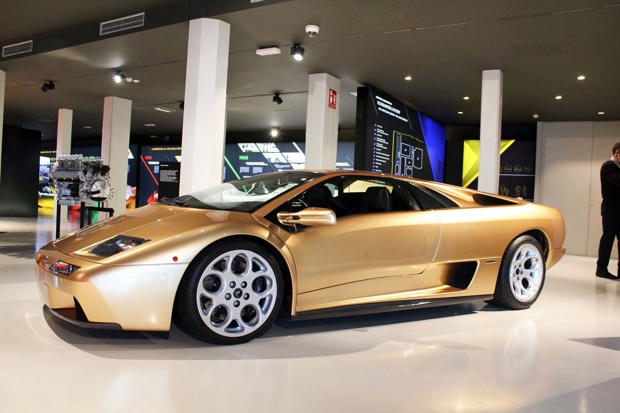
Lamborghini first introduced AWD on the 1992 Diablo, a first for extreme sports cars, and a technology Lamborghini has never abandoned.
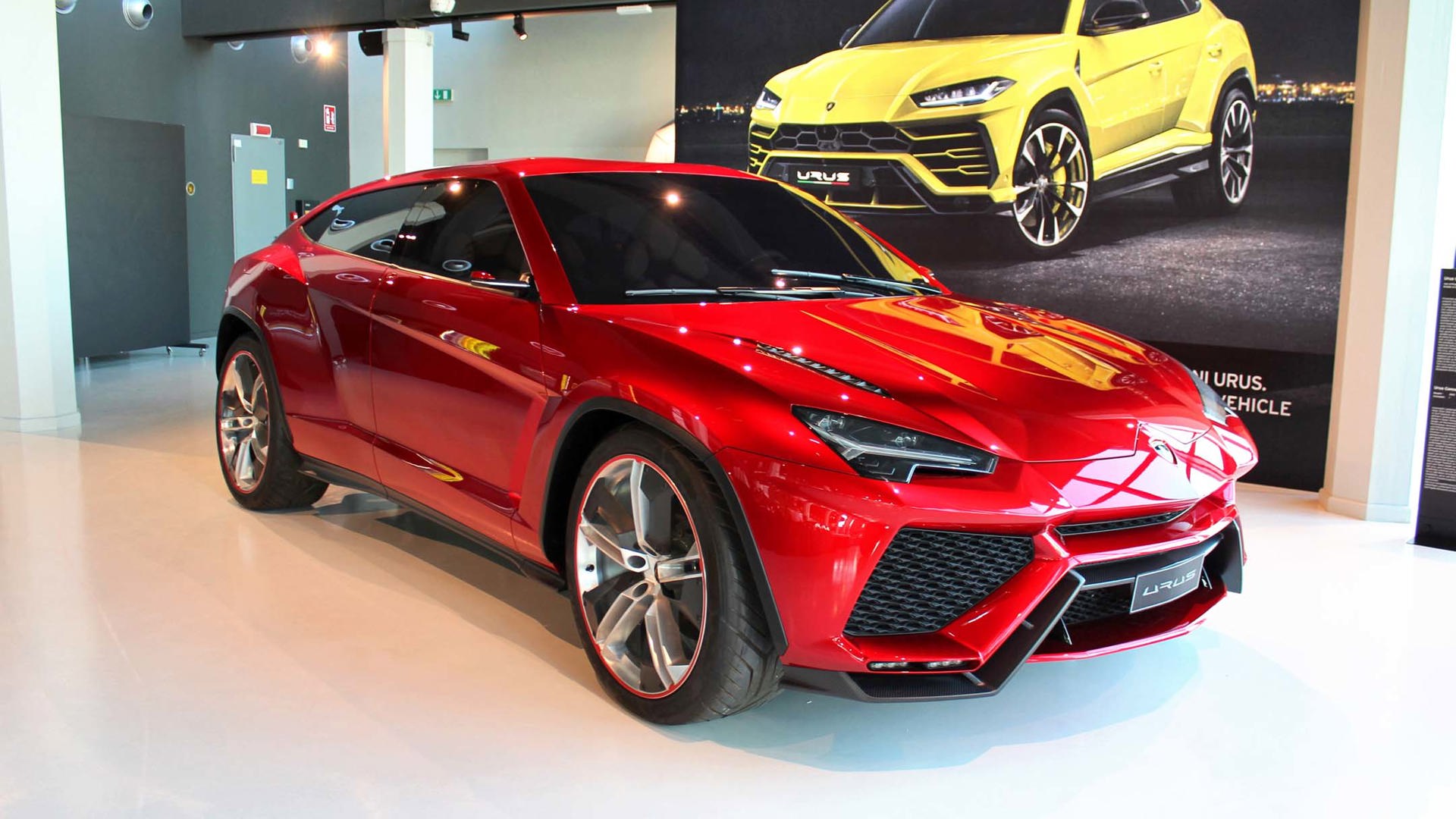
Arriving late 2018, the 2019 Urus Super Sport Utility Vehicle is expected to double Automobili Lamborghini’s output from 3,500 to 7,000 vehicles. This angry wedge of SUV badness runs with a 641 hp twin-turbo 4.0L V8, and blasts through the 100 km/h mark in 3.6 seconds on its way to a top speed of 305 km/h.
